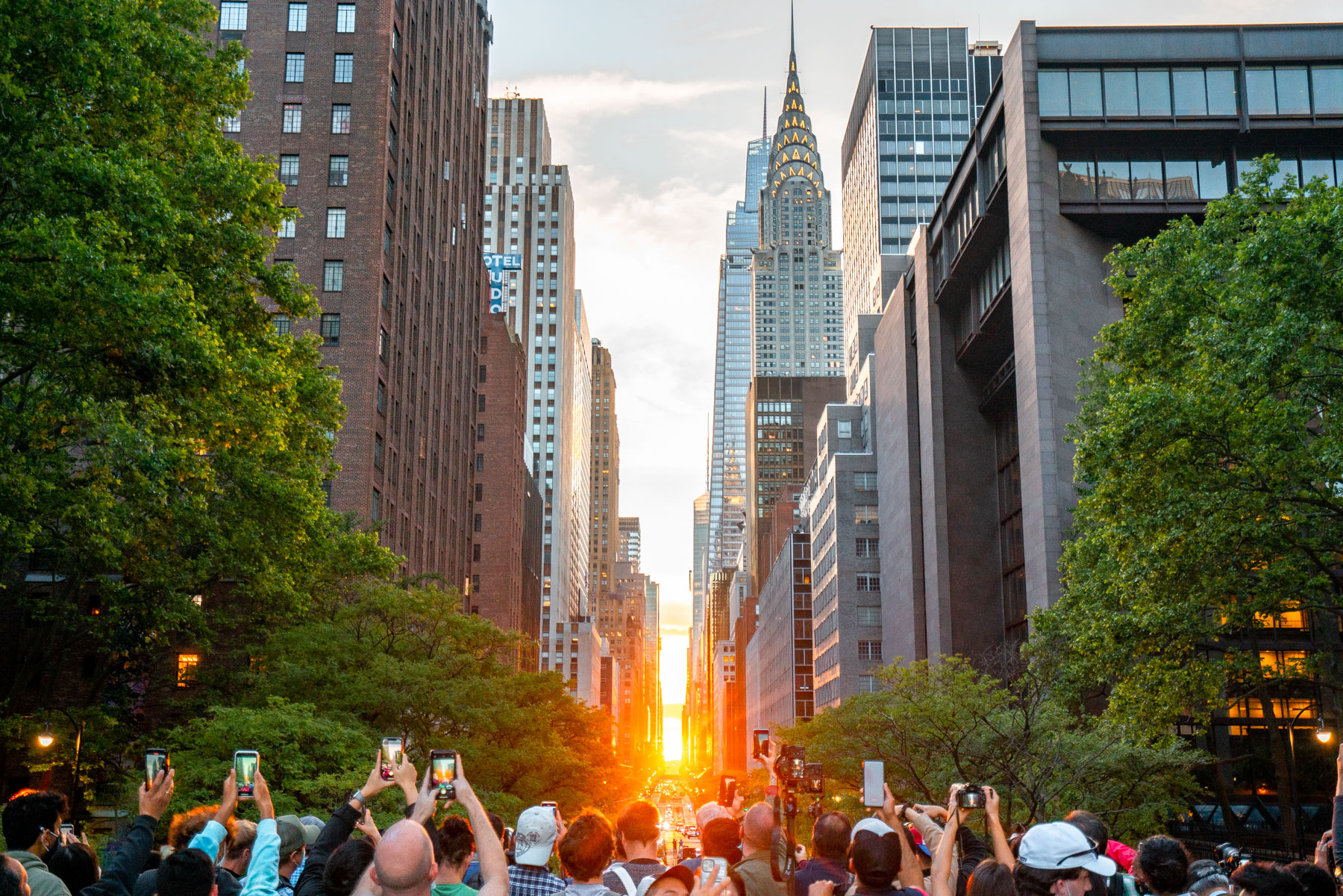
Article Summary: Historic Sites In New York
Historic Sites In New York. More Than Just Parks has 20 incredible must-see sites for you to visit.
There’s so much more to this exciting place than the Empire State Building and Yankee Stadium. In this article, we’ll familiarize you with the incredible historic sites located in New York State.
We’re going to give you our Top Twenty List of the Best Historic Sites In New York!
I’ve been to so many of these amazing places since retiring from teaching in 2018. Did I mention that I taught history? I spent a lifetime teaching about the history behind these momentous sites. Then I got to see them firsthand. And now I’m sharing the stories of these incredible places with you. It doesn’t get any better than that!
Well, actually it does since I was born and raised in New York City.
Without further ado, let’s dive in.
Table Of Contents: Historic Sites In New York
Top 20 Historic Sites In New York
20. Central Park
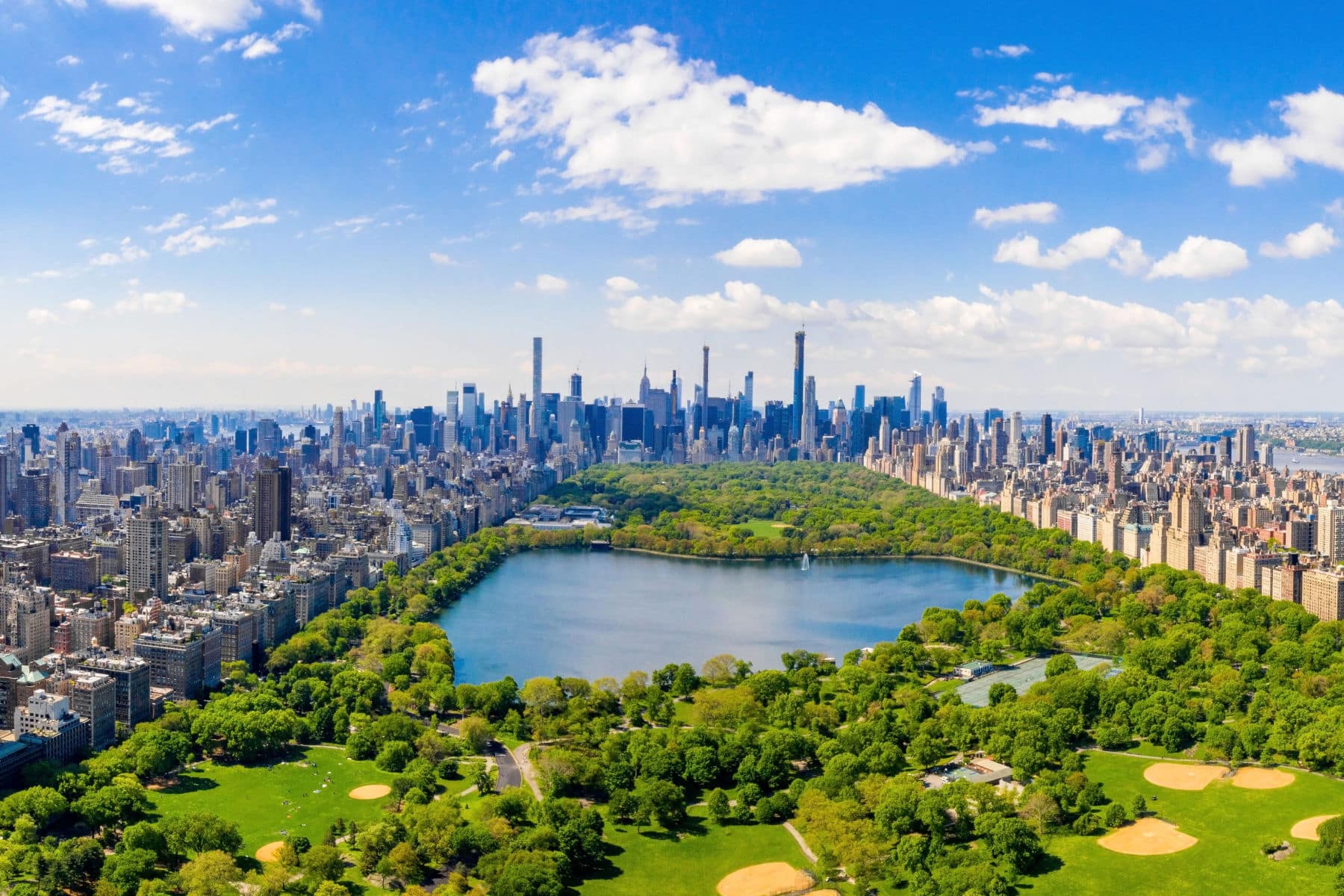
More Than Just Parks begins our countdown of the Top 20 Best Historic Sites In New York with one of America’s iconic parks. At #20 we have Central Park.
Its original purpose was to offer urban dwellers an experience of the countryside, a place to escape from the stresses of urban life and to commune with nature and fellow New Yorkers. In the process, it revolutionized urban parks.
Central Park is a public park located in the heart of Manhattan, New York City. It was first proposed in 1857 by Frederick Law Olmsted and Calvert Vaux, who won a design competition to create the park. Construction began in 1858 and was completed in 1873.
The park is 843 acres and is home to numerous landmarks, including the Central Park Zoo, the Central Park Conservatory Garden, the Bethesda Fountain, the Delacorte Theater, and the Central Park Mall.
The park was created as a response to the urbanization and industrialization of New York City in the mid-19th century.
Olmsted and Vaux’s design aimed to provide a natural oasis within the city, with the intention of providing a place for the public to enjoy nature and escape the hustle and bustle of the city.
A Popular Destination For New Yorkers
Throughout its history, Central Park has been a popular destination for New Yorkers and visitors alike. It has been the site of numerous events and cultural performances, including concerts, theater performances, and art exhibitions.
In the 20th century, the park underwent a major restoration and renovation, led by Robert Moses, which aimed to address decades of neglect and improve the park’s infrastructure.
Central Park is now considered one of the most famous and iconic parks in the world, attracting millions of visitors each year.
It is known for its lush greenery, beautiful landscapes, and numerous recreational opportunities, including walking, jogging, and picnicking. It’s also a place for cultural and artistic expression, hosting events such as Shakespeare in the Park, the Summer Stage concert series, and many more.
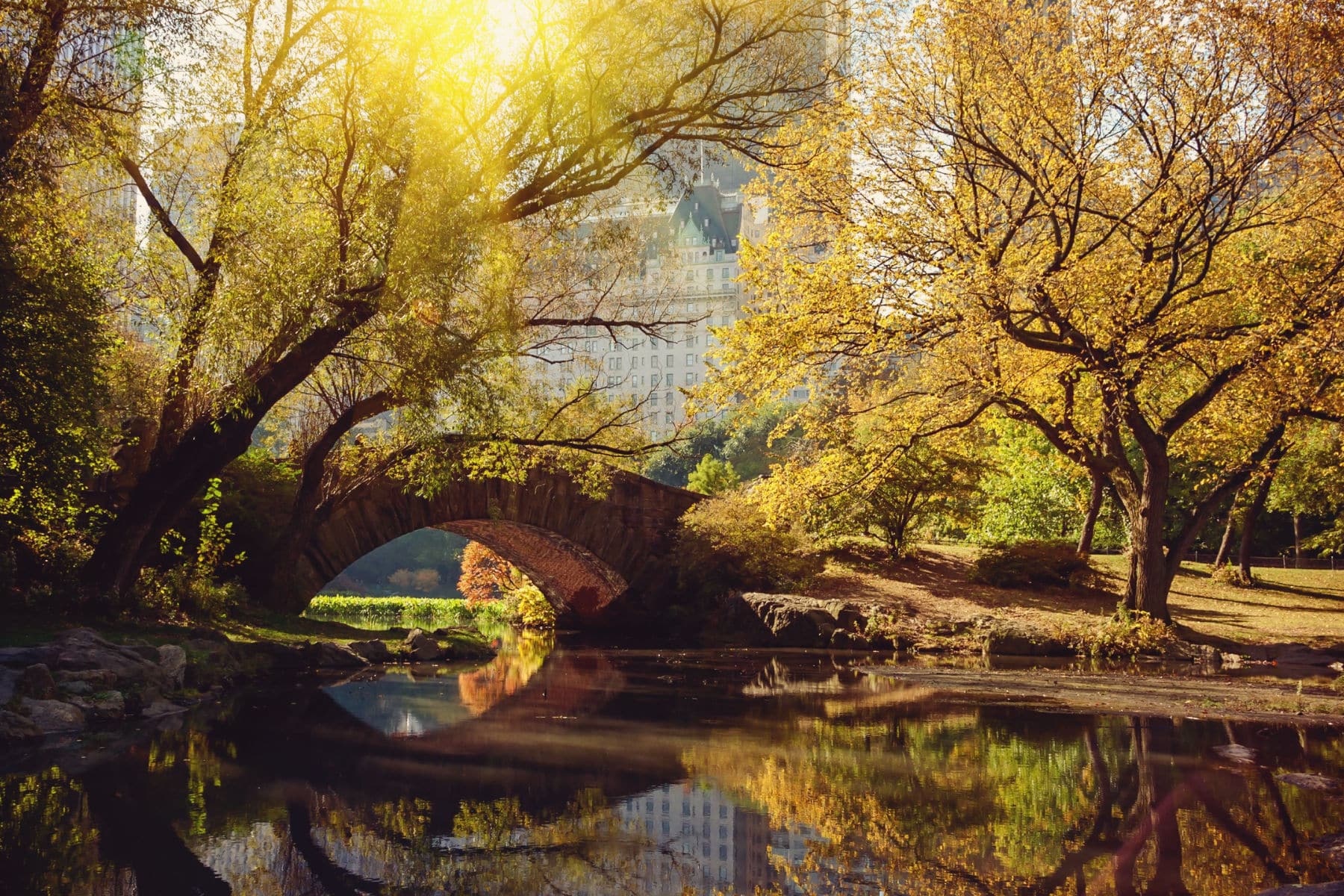
19. Tenement Museum
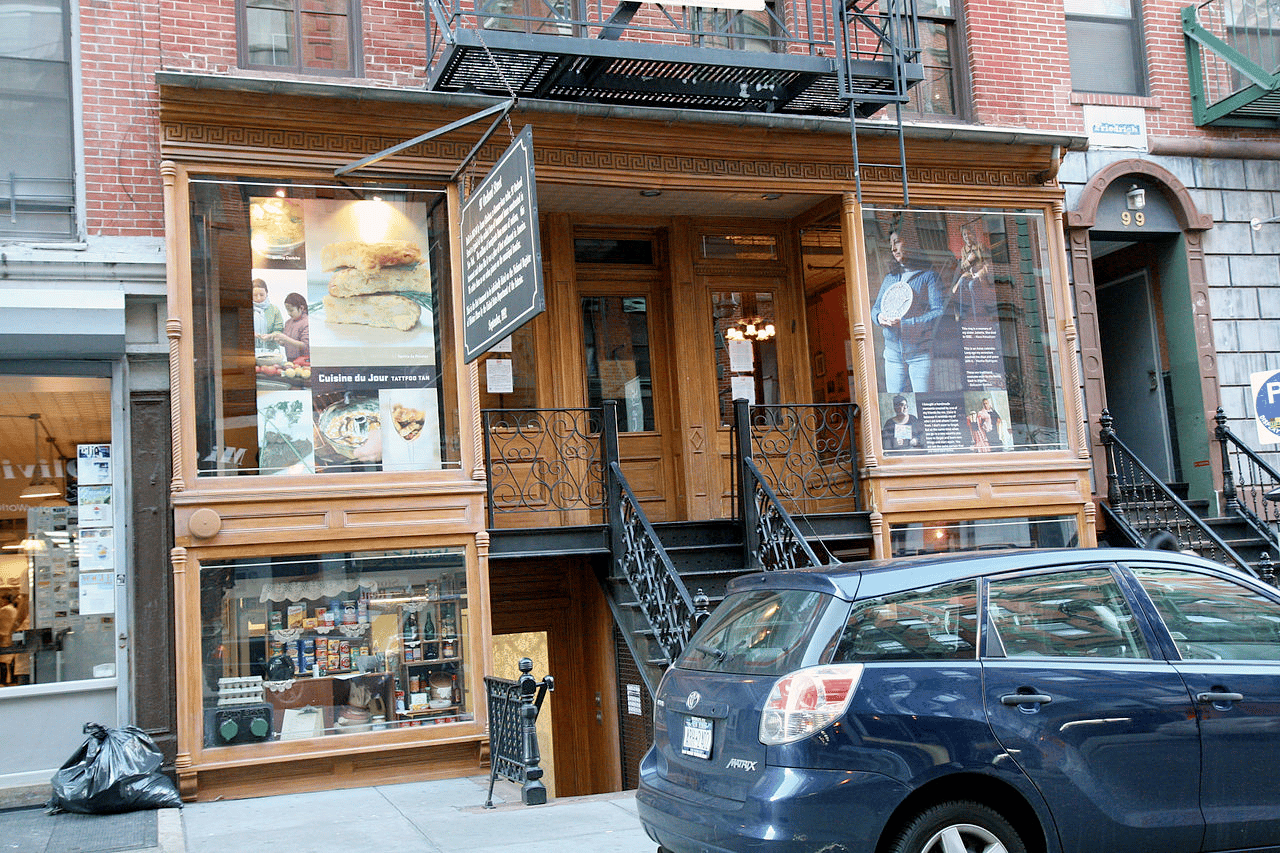
We go from iconic parks to the heart of the inner city. At #19 on our list of the Best Historic Sites In New York is The Tenement Museum in New York City. It’s a historical museum that tells the story of immigration and the everyday lives of the working-class immigrants who lived in the Lower East Side of Manhattan during the 19th and 20th centuries.
It is located in a restored tenement building at 97 Orchard Street, which was home to over 7,000 working-class immigrants between 1863 and 1935.
The museum was founded in 1988 by Ruth Abram, who purchased and restored the building, and it is considered one of the first institutions in the United States dedicated to the history of immigration.
It offers a variety of tours and programs that explore the experiences of immigrants who lived in the building, including the Irish, German, Jewish, and Chinese immigrants who called the building home.
Learn About The Lives Of The Immigrants Who Came To NYC
The museum’s exhibits include restored apartments that have been decorated and furnished to reflect the lives of the immigrants who lived there, as well as artifacts and personal items that belonged to the residents.
The museum also offers a variety of educational programs for students and adults, including walking tours of the Lower East Side and workshops on immigration and American history.
The Tenement Museum is a unique and important institution that provides a glimpse into the lives of working-class immigrants and the role they played in shaping American society. It’s a must-see destination for anyone interested in American history, urban studies, and the immigrant experience.
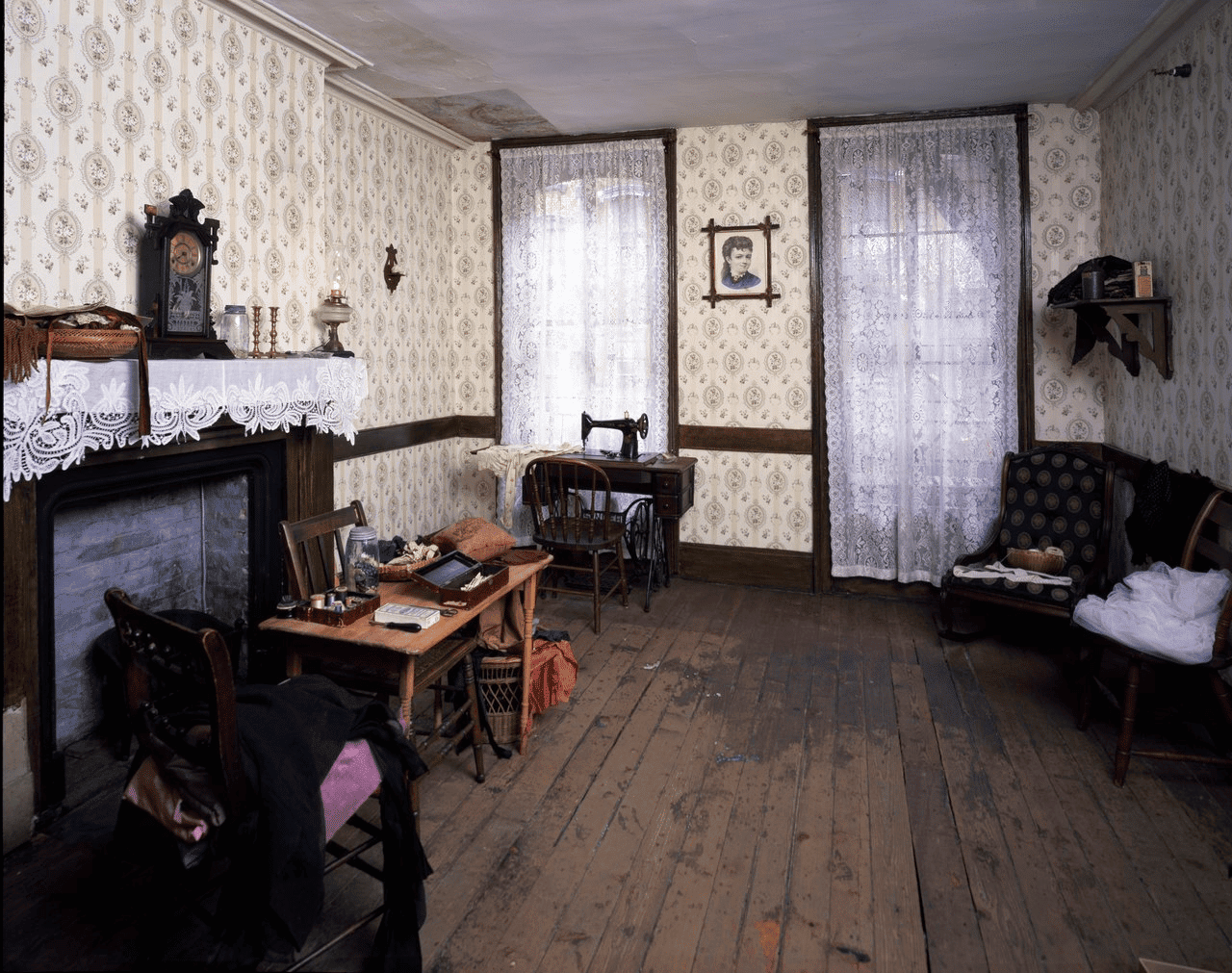
18. Rose Center For Earth & Space
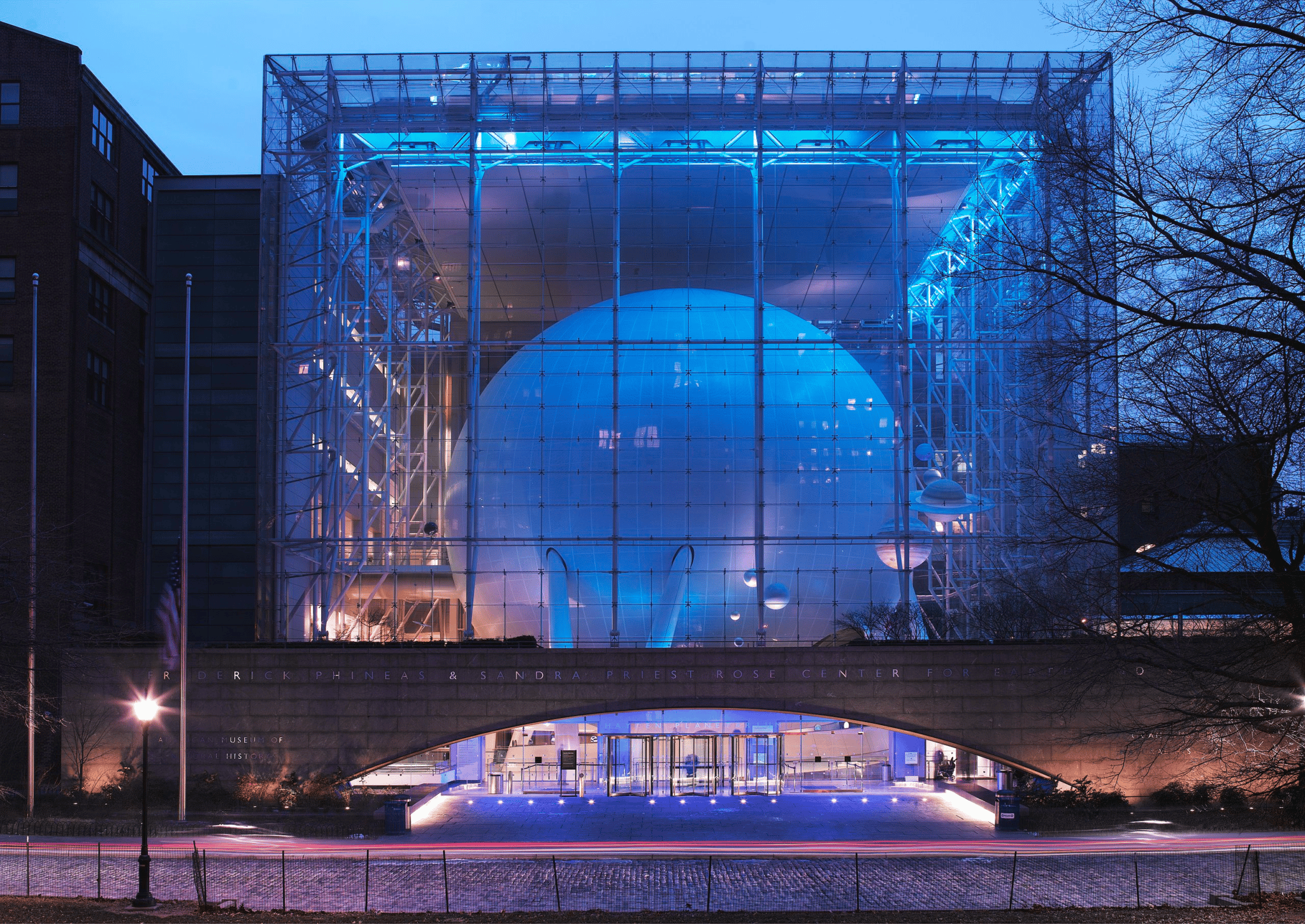
There are so many amazing historic sites in the city that never sleeps. At #8 on our list is the Rose Center For Earth & Space.
The Rose Center for Earth and Space is a museum and planetarium located in New York City, within the American Museum of Natural History.
The center encompasses the Hayden Sphere, a spectacular glass and steel structure that houses the Hayden Planetarium, as well as exhibitions that explore the vast range of sizes in the cosmos, the 13-billion-year history of the universe, the nature of galaxies, stars, and planets, and the dynamic features of planet Earth.
The Rose Center is designed to provide visitors with a comprehensive understanding of the universe and our place within it.
The center’s exhibits include interactive displays, computer animations, and state-of-the-art technology that bring the universe to life. The Hayden Planetarium, which is located within the Hayden Sphere, uses advanced technology to simulate the night sky, allowing visitors to experience the beauty and wonder of the cosmos.
The Rose Center also hosts a variety of educational programs and events, including lectures, workshops, and special events that are designed to engage visitors of all ages.
The Rose Center is considered a must-see destination for anyone interested in astronomy, space science, and the history of the universe, and it’s considered one of the most advanced planetariums in the world.
17. Trinity Church
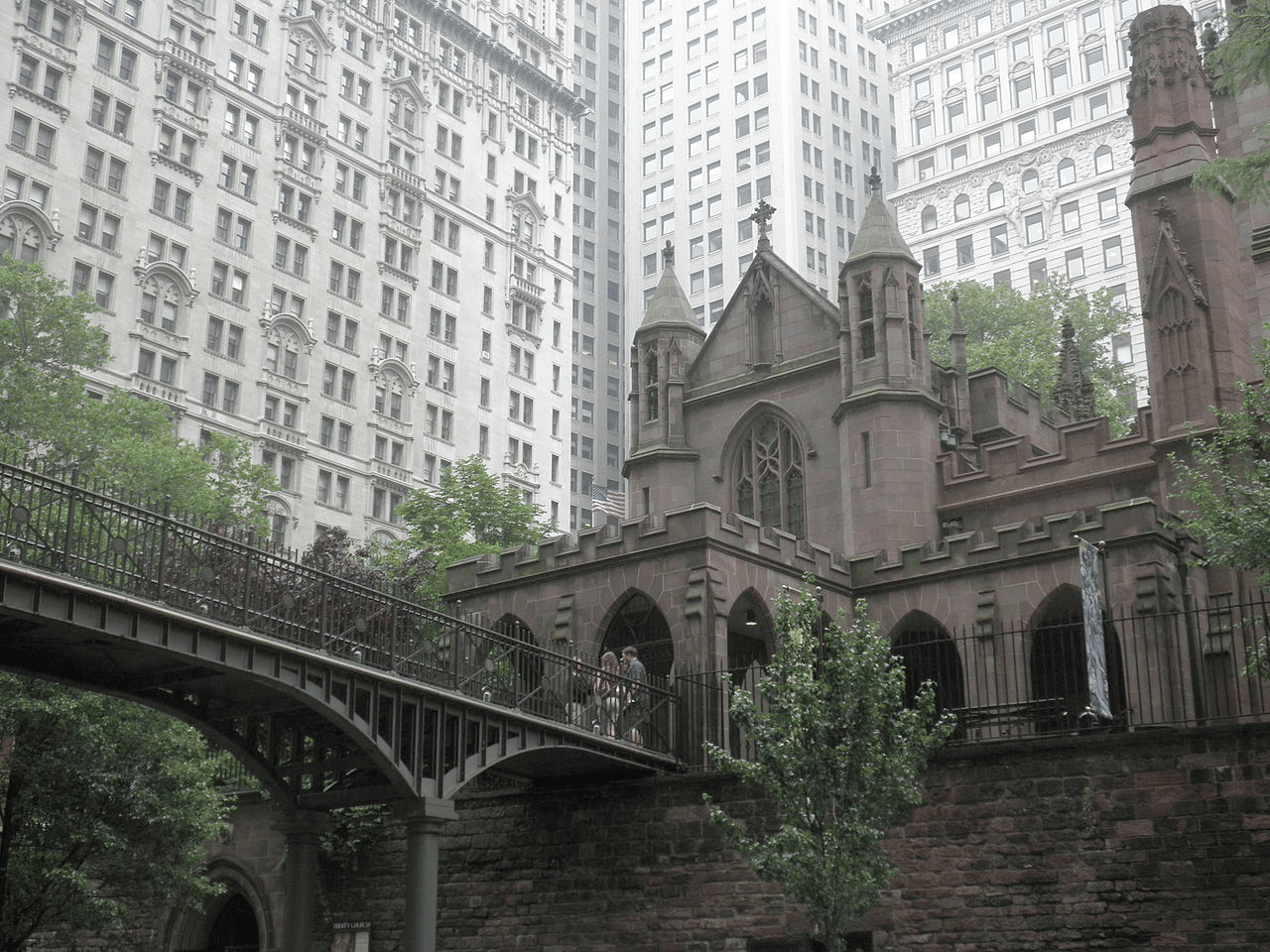
We’re still in New York City, but have no fear because there’s plenty of historic sites left on our amazing list and we definitely haven’t forgotten about the rest of New York state.
At #17 on our list of the 20 Best Historic Sites In New York Is Trinity Church. It’s a historic church located at the intersection of Broadway and Wall Street in the Financial District of Lower Manhattan.
It was founded in the 17th century, and it is one of the oldest parishes in New York City. The current building, which is considered one of the first Gothic Revival buildings in New York City, was completed in 1846, replacing the original church that had been destroyed in the Great Fire of New York in 1776.
The church’s architecture is notable for its Gothic style, featuring pointed arches, ribbed vaults, and ornate stone carvings. The surrounding cemetery is the burial place of many historical Americans, including Alexander Hamilton, one of the founding fathers of the United States, and Francis Lewis, a signer of the Declaration of Independence.
Throughout its history, Trinity Church has played an important role in the cultural and spiritual life of New York City. It has been a significant institution in the city, and it continues to be an active parish and a popular tourist destination.
The church offers a variety of services and programs, including regular Sunday services, concerts, and educational programs that highlight the history and cultural significance of the church and its role in the development of New York City.
16. Fraunces Tavern
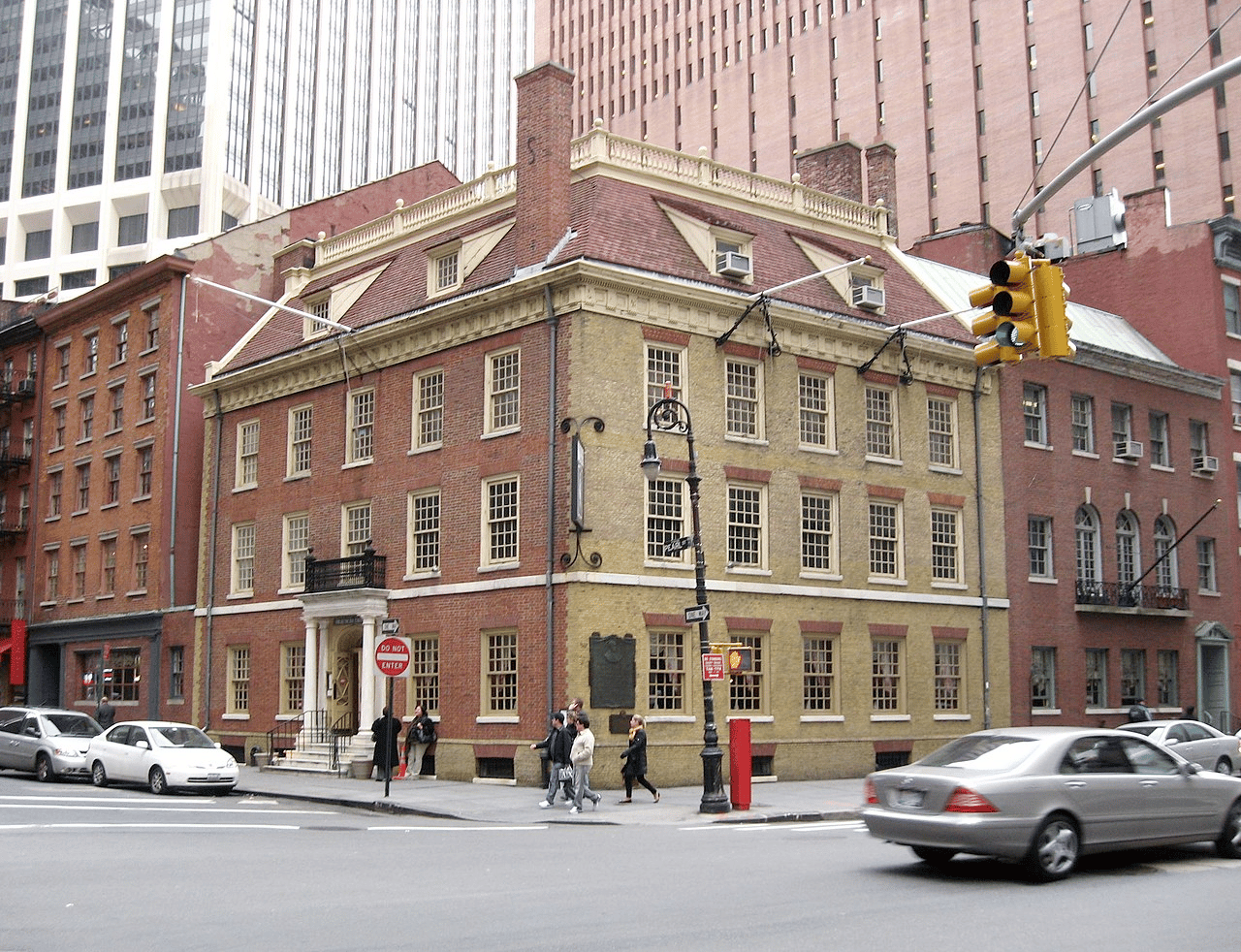
We move from a historic church to a historic tavern. At #16 on our list is Fraunces Tavern. It’s a historic building located in Manhattan, New York City.
It was originally built in 1719 by the De Lancey family, and is considered the oldest tavern in New York City and the oldest standing structure in Manhattan.
The tavern served as a meeting place for prominent figures such as George Washington, Alexander Hamilton, and the Sons of Liberty during the American Revolutionary War.
Saved By The Daughters Of The American Revolution
In 1900, the building was meant to be demolished but the Daughters of the American Revolution, with the help of Andrew H. Green, attempted to purchase and preserve the property. However, their efforts were unsuccessful, until the city came together to save the building.
The building was then purchased by the Sons of the Revolution in the State of New York, who restored and preserved it as a museum.
Today, Fraunces Tavern serves as a museum and a National Historic Landmark, showcasing the history of the American Revolution and the role of the tavern in colonial New York.
Visitors can tour the restored tavern, see exhibits on the American Revolution, and attend educational programs and events. The tavern also operates as a restaurant, serving traditional colonial fare.
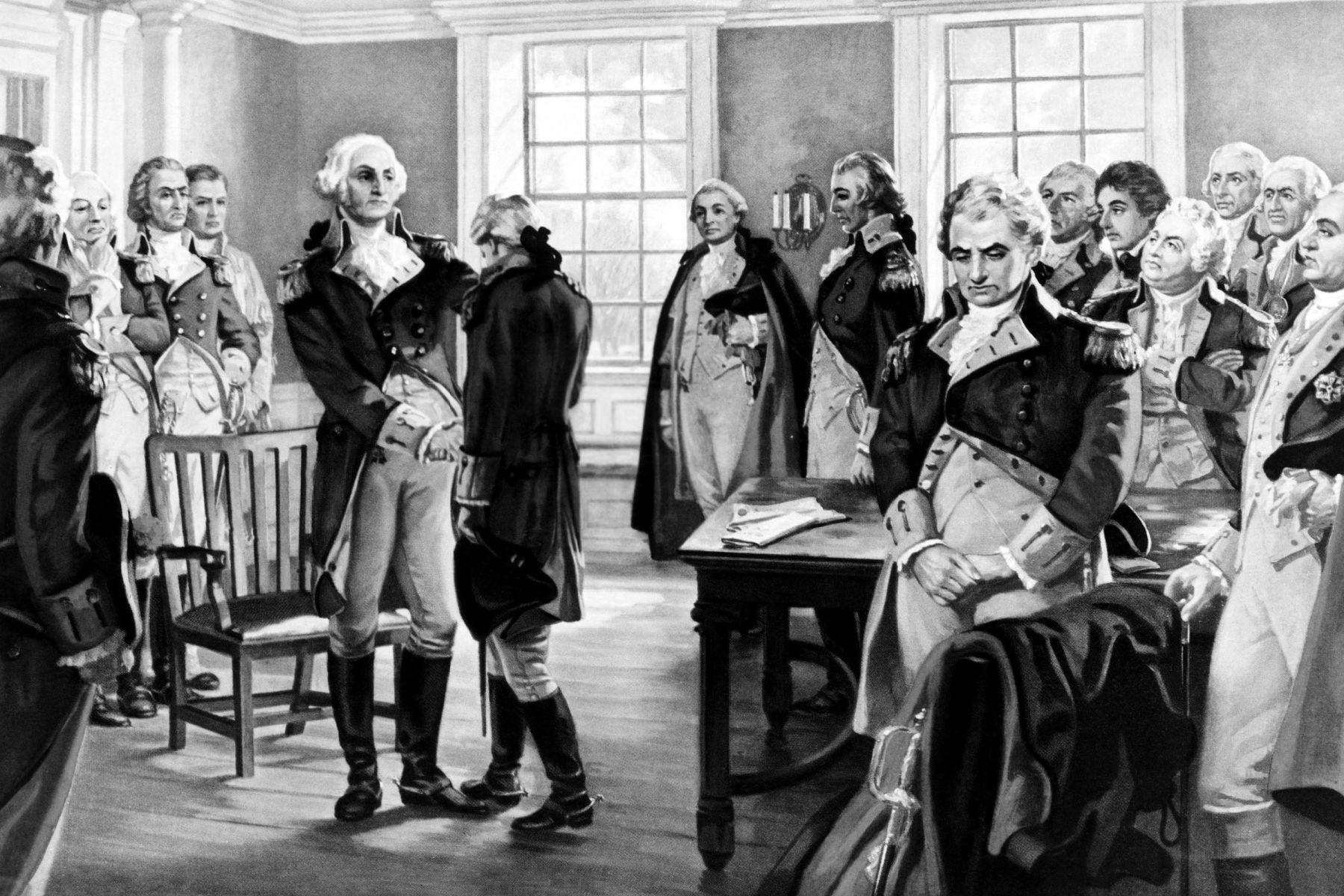
Top 15 Historic Sites In New York
15. Brooklyn Bridge
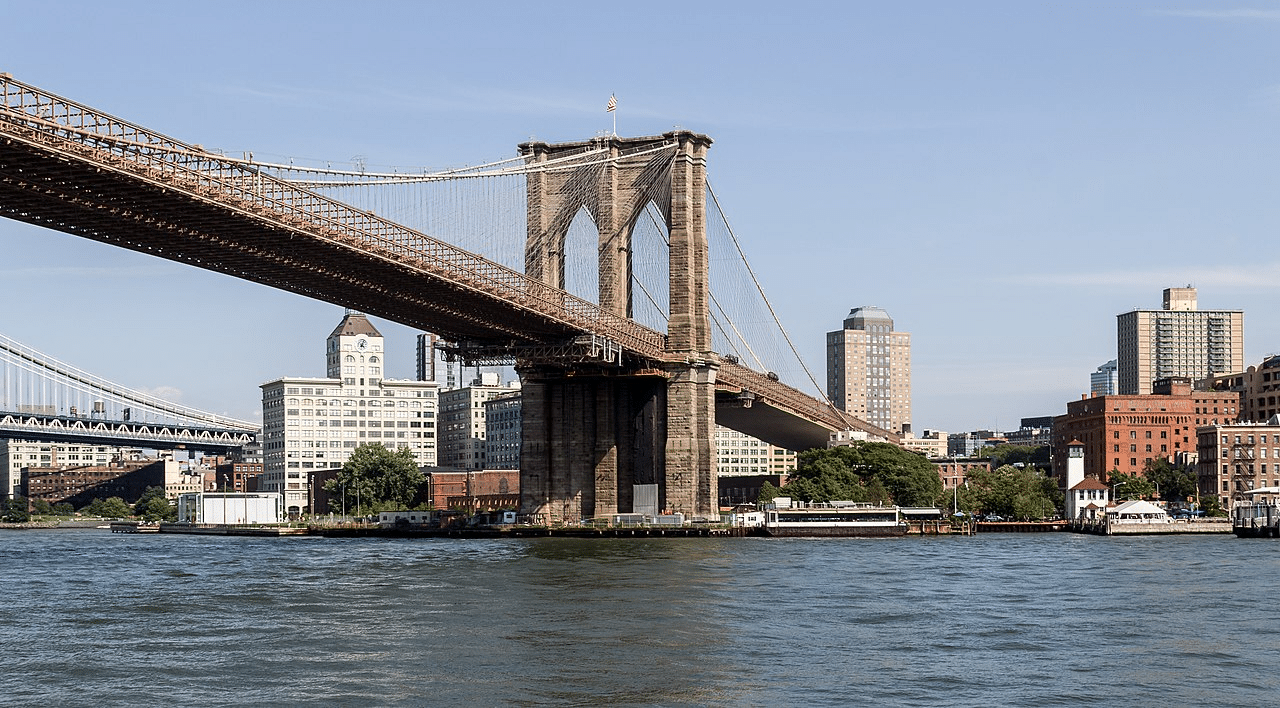
We’re moving on to the Top 15 Historic Sites In New York. And while we’ve left Manhattan, we’re still in New York City. At #15 we have the iconic Brooklyn Bridge.
The Brooklyn Bridge is a historic suspension bridge in New York City, connecting the boroughs of Manhattan and Brooklyn.
The Brooklyn Bridge was built in 1883. It was the first suspension bridge to use steel for its cable wire. It was the first bridge to use explosives in a dangerous underwater device called a caisson.
At the time it was built, the 3,460-foot Brooklyn Bridge was also crowned the longest suspension bridge in the world spanning 1,595 feet (486 meters) across the East River.
The bridge was designed by John A. Roebling, and its construction was led by his son, Washington Roebling, after John Roebling died from an injury sustained during the initial construction.
Before the Brooklyn Bridge was built, Brooklyn was considered a separate city entirely, and not classified as part of New York City. The bridge was a major engineering feat of its time, and it was a crucial link in connecting the two cities, making it much easier for people to travel between the two. It was also a symbol of the city’s growth and the future.
Today, the Brooklyn Bridge is a National Historic Landmark and a New York City Landmark, and it continues to be an important transportation link and a popular tourist destination. Visitors can walk or bike across the bridge and enjoy the views of the city and the river, it is also a great spot for photography and sightseeing.
The Brooklyn Bridge is a symbol of New York City’s history, engineering, and culture and it’s considered an iconic landmark of the city.
14. The American Museum Of Natural History
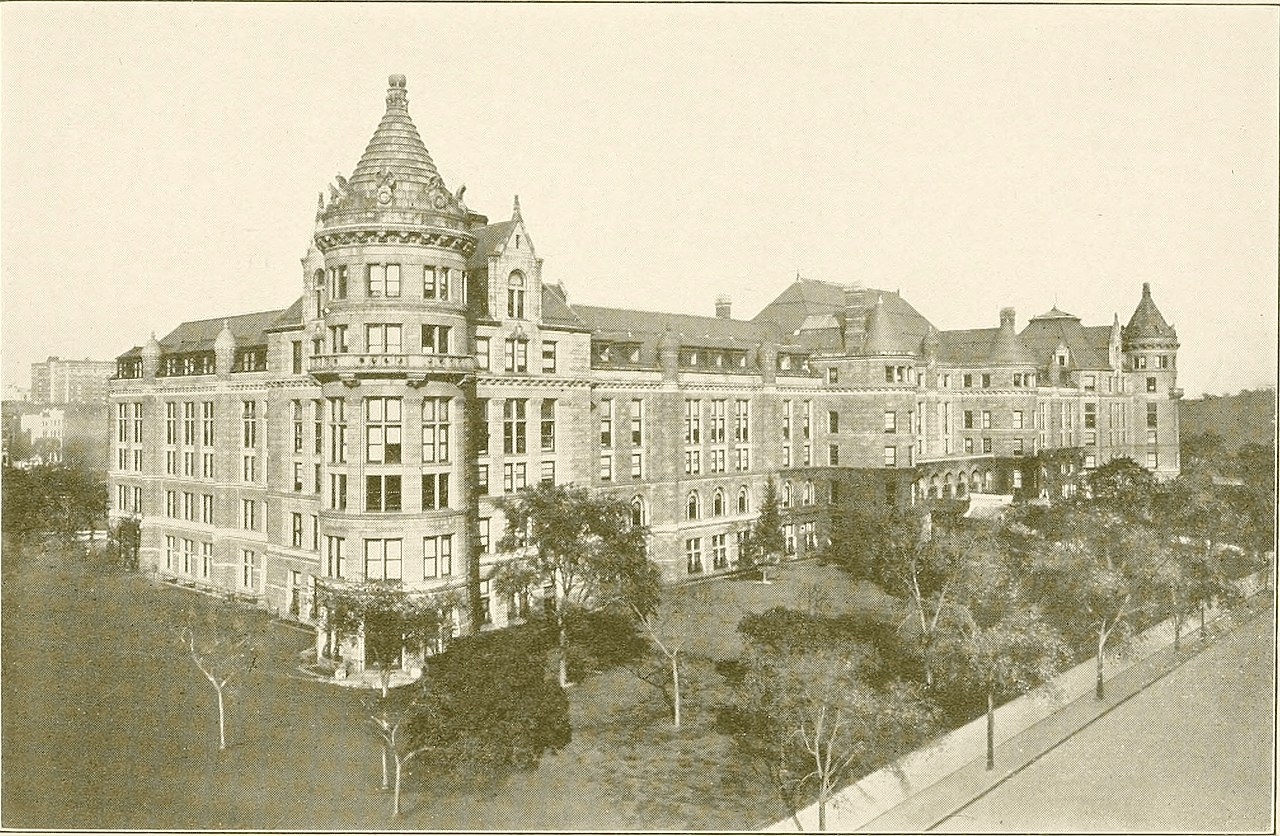
We move from an amazing bridge to an incredible museum. And folks, we’re still in New York City! At #14 we have one of the finest museums in the world – the American Museum of Natural History.
The American Museum of Natural History (AMNH) is a world-renowned natural history museum located on the Upper West Side of Manhattan in New York City. It was founded in 1869 and is one of the oldest and largest natural history museums in the world.
Its permanent exhibits cover a wide range of topics, including anthropology, biology, geology, and paleontology, and they explore the natural world and the universe.
The museum’s collection contains over 33 million specimens and artifacts, including specimens of animals, plants, rocks, and minerals, as well as cultural artifacts from ancient and modern cultures. The museum’s most famous exhibit is the Hall of Saurischian Dinosaurs, which features a 94-foot-long Barosaurus and a 65-foot-long Allosaurus.
The museum also hosts a variety of temporary exhibits and special events throughout the year, as well as educational programs for visitors of all ages. The AMNH is also home to research laboratories and a library, which are used by scientists, scholars and students from around the world.
With its vast collection and wide range of exhibits, the American Museum of Natural History is a must-see destination for anyone interested in natural history, science, and culture.

13. Empire State Building
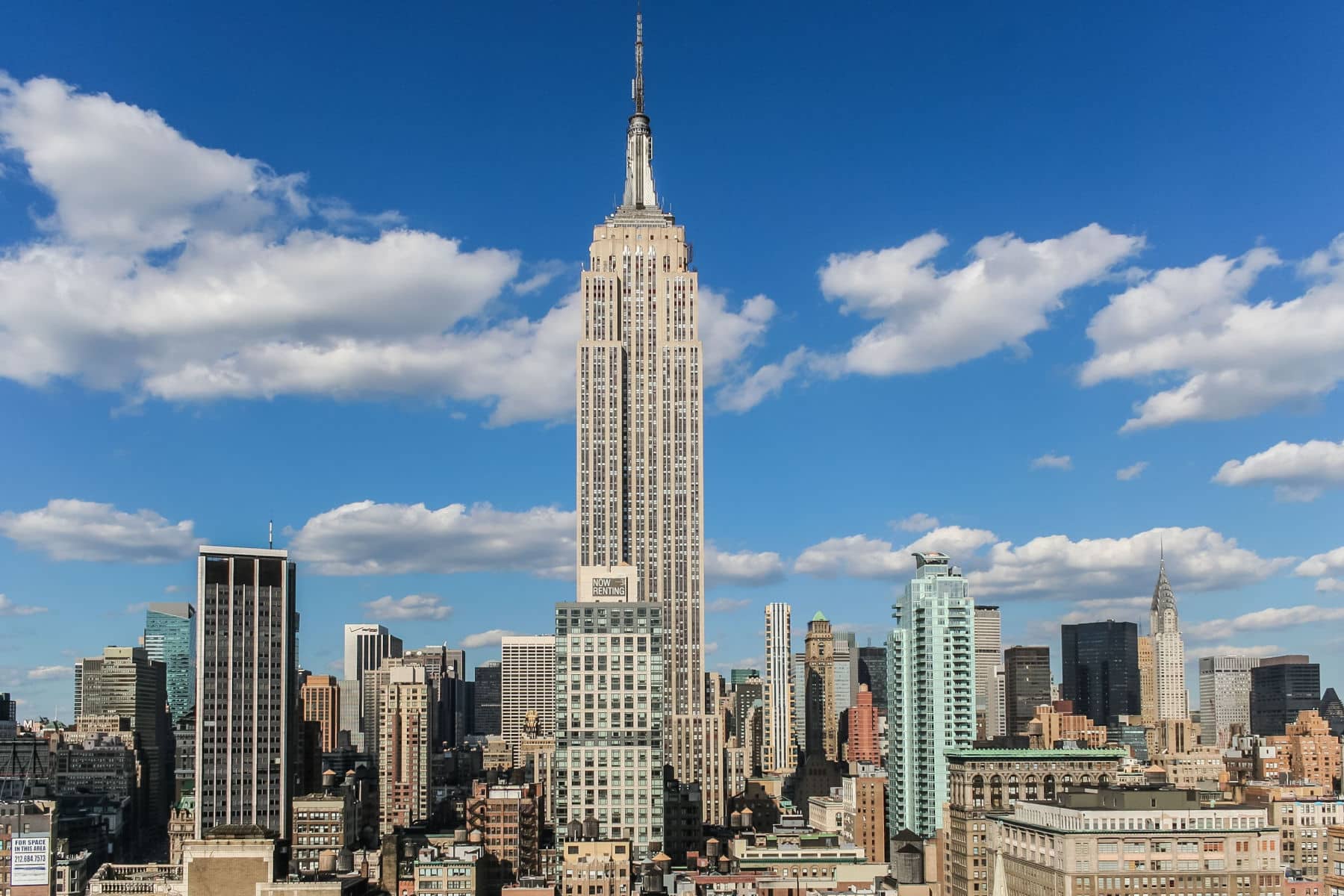
For #13 on our list of the Best Historic Sites In New York, you’ll need to look up. Way up! It’s the Empire State Building.
The Empire State Building is a skyscraper located in New York City. It was designed by the architectural firm Shreve, Lamb & Harmon and was completed in 1931. It stands at 1,250 feet (381 meters) tall and was the tallest building in the world at the time of its completion.
A Brief History Of The Empire State Building
Here is a brief history of the Empire State Building:
- Planning and Construction: The Empire State Building was planned during the late 1920s by John J. Raskob, a businessman and former chairman of the Democratic National Committee. Raskob teamed up with architect William Lamb to design the building, which was intended to be the tallest building in the world.
- Height Competition: The Empire State Building was completed in 1931 and stood at a height of 1,250 feet (381 meters), making it the tallest building in the world at the time. The building’s height was intended to compete with the Chrysler Building, which was also under construction at the same time.
- Iconic Status: The Empire State Building quickly became an iconic symbol of New York City and a popular tourist attraction. It was featured in numerous films, including “King Kong” (1933) and “Sleepless in Seattle” (1993).
- Reinforced by Aircraft Cables: During World War II, the Empire State Building was a key location for broadcasting news and propaganda. In 1945, an Army B-25 bomber crashed into the building’s 79th floor due to poor visibility caused by heavy fog. The crash caused extensive damage, but the building remained standing. In the years that followed, the building was reinforced with aircraft cables to prevent future disasters.
- Renovations and Improvements: The Empire State Building has undergone several renovations and improvements over the years. In the 1950s and 1960s, the building’s lobby was renovated and the observation deck was expanded. In 1986, the building’s exterior was renovated and restored to its original appearance. In 2019, the building’s observation deck underwent a $165 million renovation to improve the visitor experience.
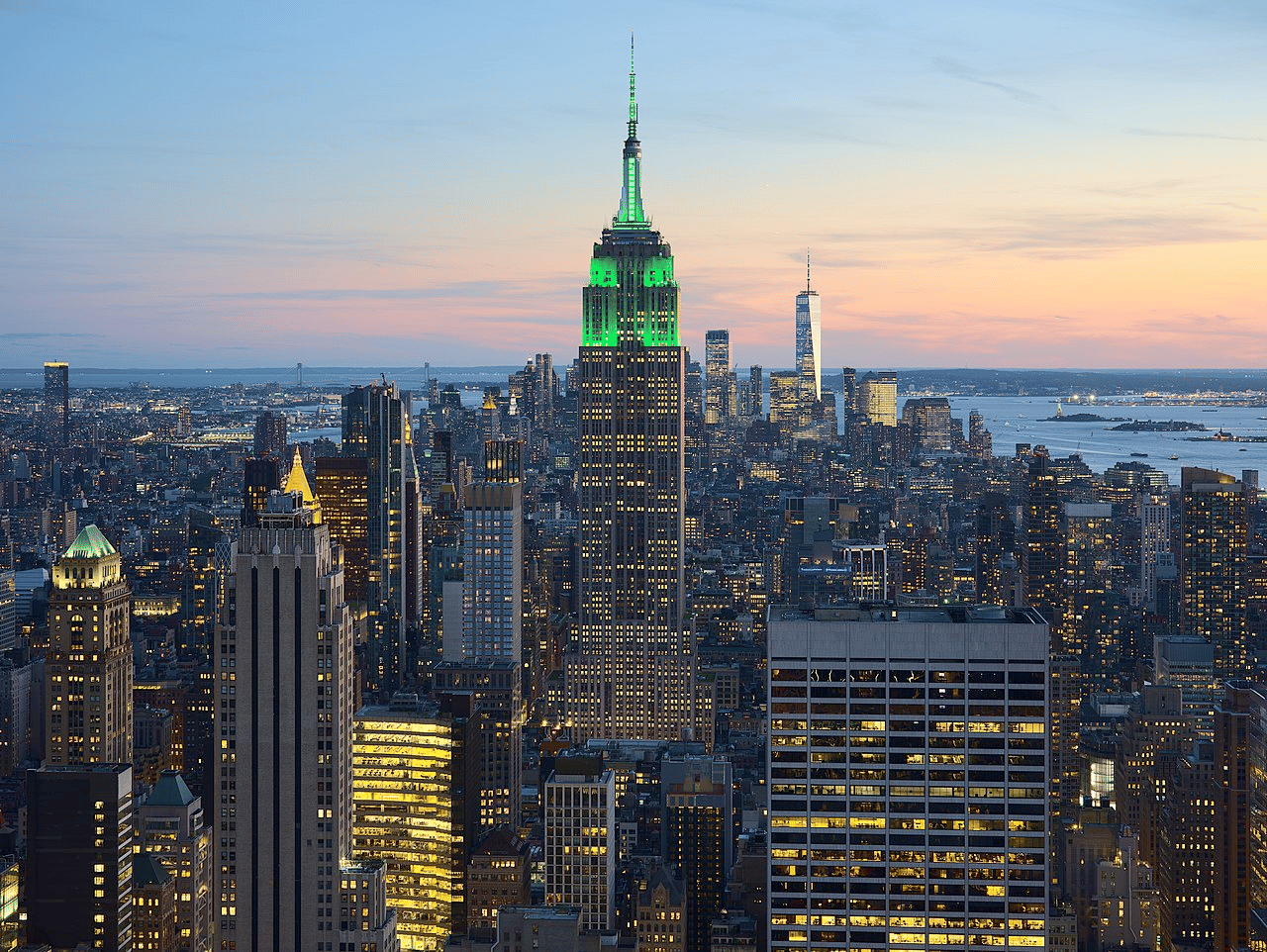
Check Out One Of The Amazing Tours At The Empire State Building
The Empire State Building offers several different tours for visitors to experience the building and its history.
The most popular tour is the “Main Observation Deck” tour, which allows visitors to take an elevator to the 86th floor observation deck to take in the 360-degree views of the city.
The “Skip the Line” tour allows visitors to bypass the main entrance lines and proceed directly to the elevators for the main observation deck.
The “Empire State Building Observatory Experience” is a self-guided audio tour that allows visitors to explore the main observation deck at their own pace.
For the more adventurous, there is the “Empire State Building: 102nd Floor Observatory” tour, which takes you to the top of the building, 102nd floor observatory, where you can see the most spectacular views of the city.
The “Empire State Building: Behind the Scenes” tour, where visitors can learn about the building’s history, architecture and engineering.
Finally, the “Empire State Building: VIP Tour” offers a private guide and priority access to the elevators and observation decks.
Please note that all tours are subject to availability and are offered at an additional cost to the general admission ticket price.
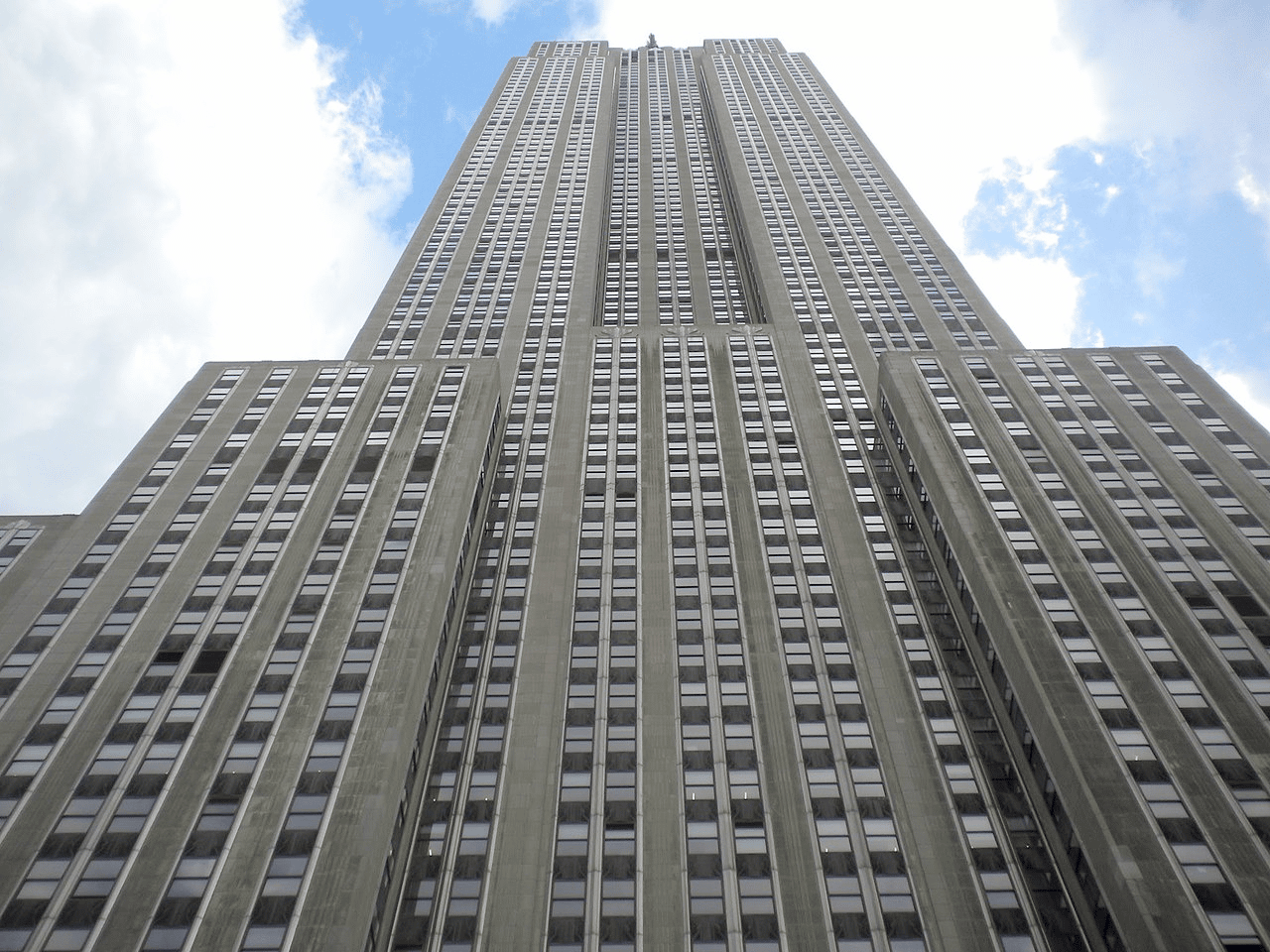
12. The Metropolitan Museum of Art
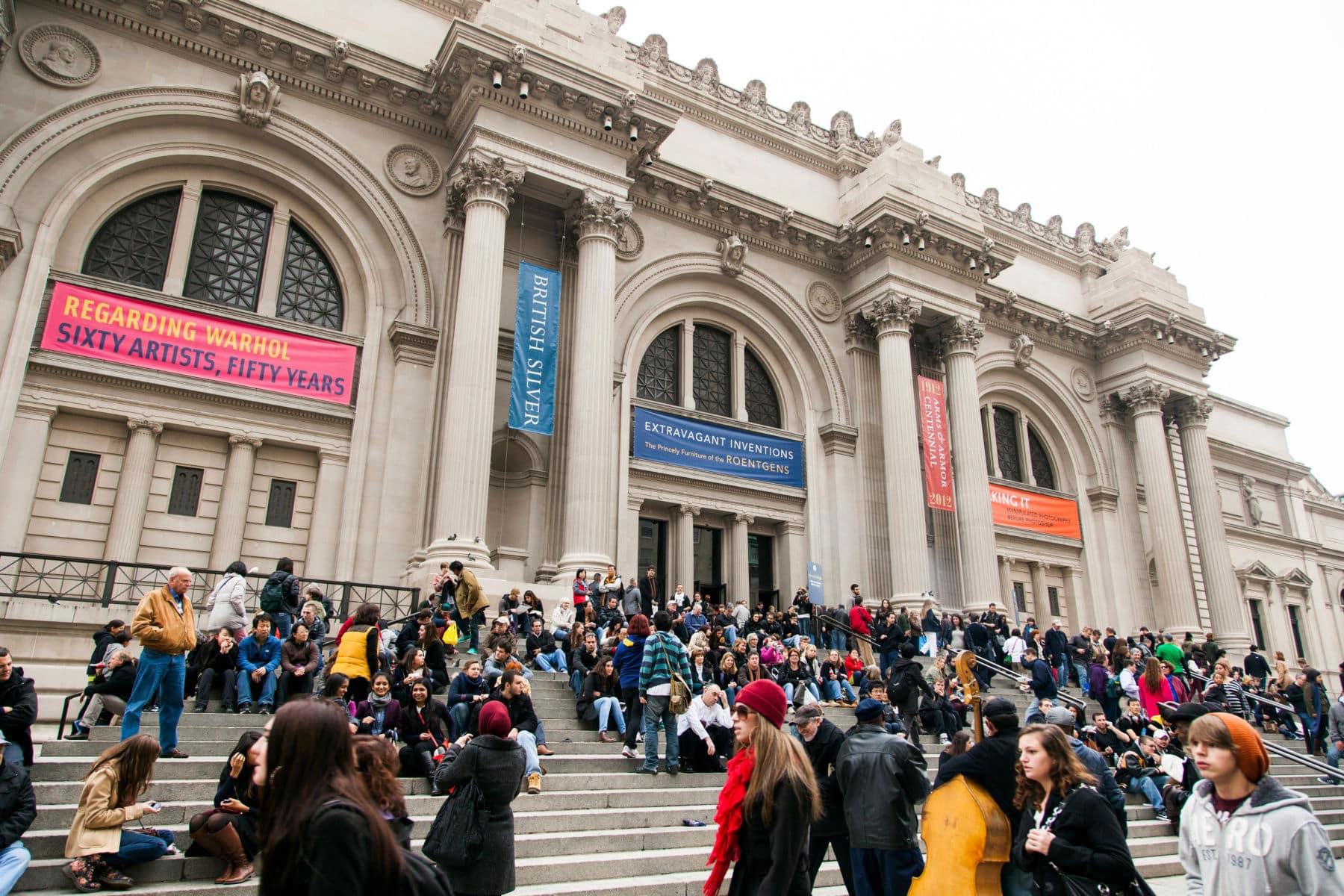
Folks, we’re not finished with museums yet. New York City features more world class museums than any other city in America and, if you love art, then you’ll love what’s next. At #12 on our list of the Best Historic Sites In New York is the Metropolitan Museum of Art.
The Metropolitan Museum of Art, commonly known as “the Met,” is one of the largest and most comprehensive art museums in the world.
The museum’s collection includes over 2 million works of art spanning 5,000 years of world culture, from ancient Egypt to contemporary art. The Met has collections of American, European, Egyptian, Greek, Roman, Asian, African, Oceanic, Byzantine, and Islamic art, as well as the Costume Institute, the American Wing, and the Met Cloisters.
The Met’s main building, located at the edge of Central Park on Fifth Avenue, is a Beaux-Arts structure designed by American architects Calvert Vaux and Jacob Wrey Mold.
The museum also operates several smaller facilities, including The Met Cloisters in Upper Manhattan, which focuses on medieval art, and The Met Breuer on Madison Avenue, which focuses on modern and contemporary art.
The Met is open seven days a week and offers a wide range of programs and services for visitors, including guided tours, lectures, workshops, and family programs. The museum also operates a research library, conservation lab, and an online collection database that is accessible to the public.
Admission to the Met is “pay what you wish,” meaning that visitors can pay whatever they can afford. However, some special exhibitions and events may have an additional admission fee.
11. Grand Central Station
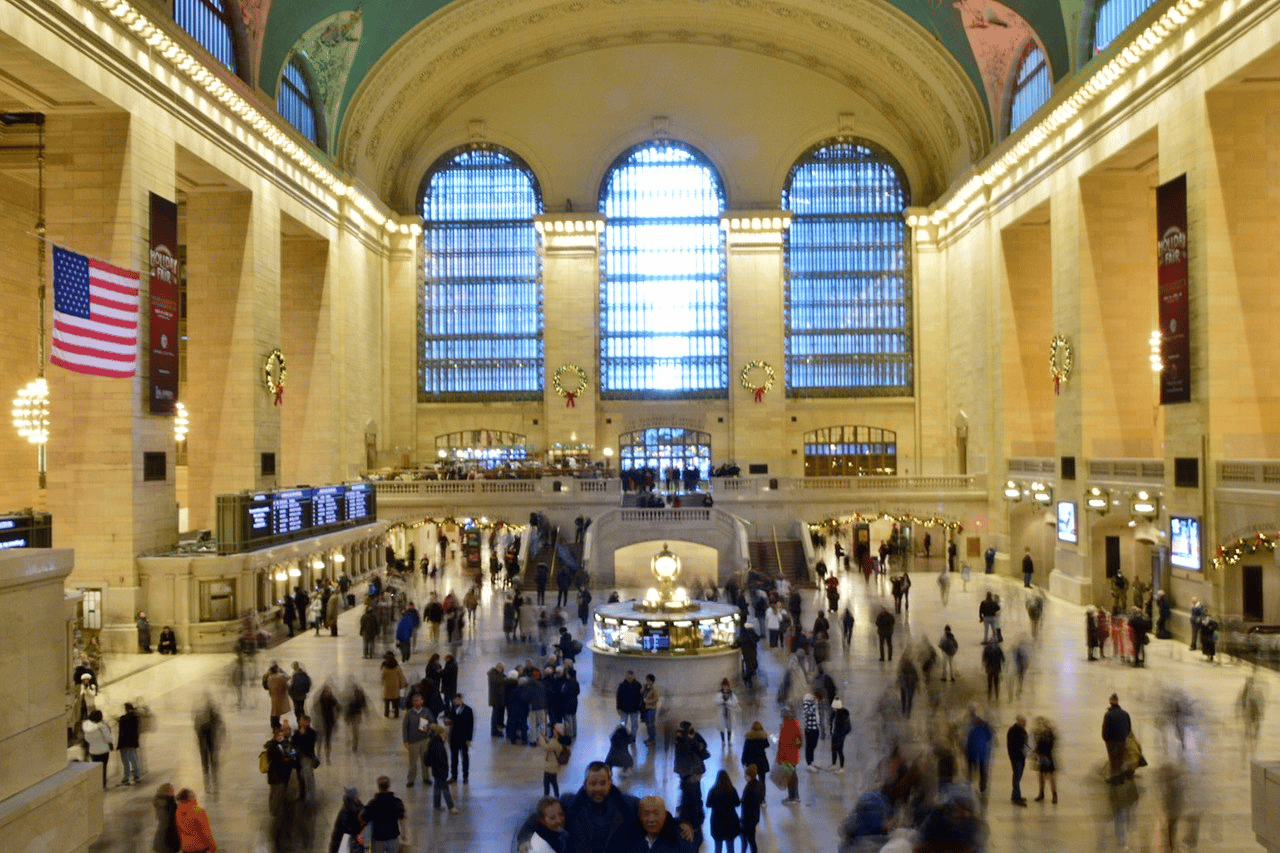
We move from museums to railroad terminals which are as magnificent as museums. At #11 we have Grand Central Station.
Grand Central Terminal, often referred to as Grand Central Station, is a train station located in Midtown Manhattan, New York City. It is one of the most iconic buildings in the city and a major transportation hub for commuters and tourists alike.
The history of Grand Central Terminal dates back to the mid-19th century when the New York and Harlem Railroad Company built a train depot on the site in 1854.
The depot was later replaced by the Grand Central Depot, which opened in 1871. This structure was a three-story, red-brick building with two train sheds and a waiting room that could accommodate up to 500 passengers.
By the turn of the 20th century, the Grand Central Depot was outdated and could no longer handle the growing number of commuters and trains.
In 1903, the New York Central and Hudson River Railroad, which had acquired the property, decided to build a new, larger terminal. The company hired architects Reed and Stem and Warren and Wetmore to design the new Grand Central Terminal.
Construction of the new terminal began in 1903 and was completed in 1913, at a cost of $80 million (equivalent to over $2 billion today).
The new terminal was a grand Beaux-Arts building with a concourse over 400 feet long and a ceiling over 120 feet high. It featured a large main waiting room, several restaurants, shops, and other amenities.
The terminal also had a unique feature: a large, four-faced clock atop the main entrance, which became a popular meeting spot for New Yorkers.
It’s Undergone Several Renovations & Restorations
Over the years, Grand Central Terminal has undergone several renovations and restorations. In the 1920s and 1930s, the terminal was electrified, and its tracks were extended to accommodate longer trains. During World War II, the terminal was used to transport troops and supplies, and its famous clock was dimmed to comply with wartime blackouts.
In the 1960s, plans were made to demolish Grand Central Terminal and replace it with a modern office tower. However, a group of activists, led by Jacqueline Kennedy Onassis, fought to preserve the terminal, and in 1978, it was designated a National Historic Landmark.
It underwent a major renovation in the 1990s, which restored many of its original features, including the famous starry ceiling in the main concourse.

It’s More Than Just A Railroad Terminal
In addition to being a major transportation hub, Grand Central Terminal also offers a variety of dining, shopping, and entertainment options for visitors.
The terminal is home to over 20 restaurants, including upscale dining options and casual eateries, as well as over 50 luxury stores. There are also several events and tours available for visitors to learn about the terminal’s history and architecture.
Grand Central Terminal is also a popular filming location for movies and TV shows and has been featured in numerous productions such as, The Avengers, Men in Black, The Godfather and many more.
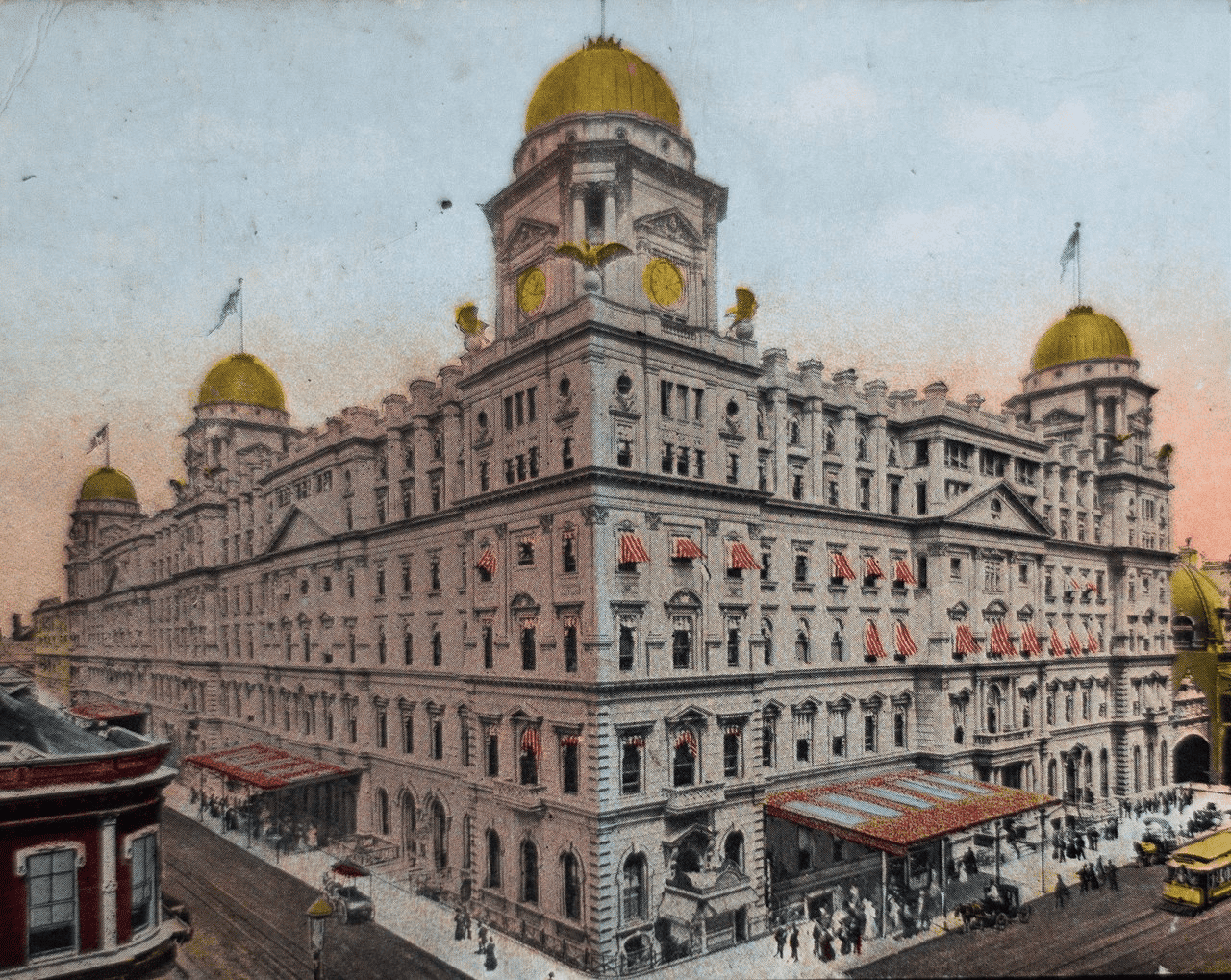
Top 10 Historic Sites In New York
10. Women’s Rights National Historic Park

As we begin our countdown of the Top 10 Historic Sites In New York, we have finally left New York City (be advised that we will return) to travel to Seneca Falls, New York. At #10, we have the Women’s Rights National Historic Park.
This historic park is dedicated to the history of the women’s rights movement in the United States. The park was established in 1980 and is managed by the National Park Service.
The history of the Women’s Rights National Historic Park dates back to the mid-19th century when a group of women led by Elizabeth Cady Stanton and Lucretia Mott organized the Seneca Falls Convention in July 1848.
The convention was the first women’s rights convention in the United States and was attended by more than 300 people, including women and men.
Declaration Of Sentiments
At the convention, the attendees discussed the social, civil, and religious rights of women and drafted a document called the Declaration of Sentiments, which demanded that women be granted the same rights as men.
The Declaration of Sentiments was modeled after the Declaration of Independence and included demands for women’s right to vote, own property, and participate in the government.
The Seneca Falls Convention is considered a turning point in the women’s rights movement, and the Women’s Rights National Historic Park was established to commemorate this historic event.
The park includes several historic buildings, including the Wesleyan Chapel where the convention was held, the Elizabeth Cady Stanton House, and the M’Clintock House, which was the site of the planning sessions for the convention.
In addition to the historic buildings, the park also includes several exhibits and interpretive programs that tell the story of the women’s rights movement and its leaders, including Susan B. Anthony, Elizabeth Cady Stanton, and Sojourner Truth.
The park is an important destination for tourists and researchers interested in the history of women’s rights in the United States.
9. Federal Hall National Memorial
We’re back in New York City at a place which serves as a memorial to the country’s first capitol. It was the birthplace of American government. At #9 on our list of the Best Historic Sites In New York is Federal Hall National Memorial.
The building, which was originally built in 1700s, served as the United States Capitol building from 1785 to 1790 and as the first presidential mansion for George Washington.
The current structure, which was completed in 1842, is a replica of the original Federal Hall and serves as a museum and visitor center.
Inside, visitors can see exhibits on the history of the building and the events that took place there, including the first congress, the inauguration of George Washington as the first President of the United States, and the passage of the Bill of Rights.
The building also houses a research library, which contains a collection of books, manuscripts, and artifacts related to the early history of the United States. Visitors can also take guided tours of the building, which are offered by the National Park Service. Federal Hall National Memorial is open to the public and admission is free.
The building is located on Wall Street in the Financial District of Manhattan, and it’s a must-see for anyone interested in American history and the founding of the United States.
RELATED: 25 EPIC New York State National Parks To Visit
8. African Burial Ground National Monument
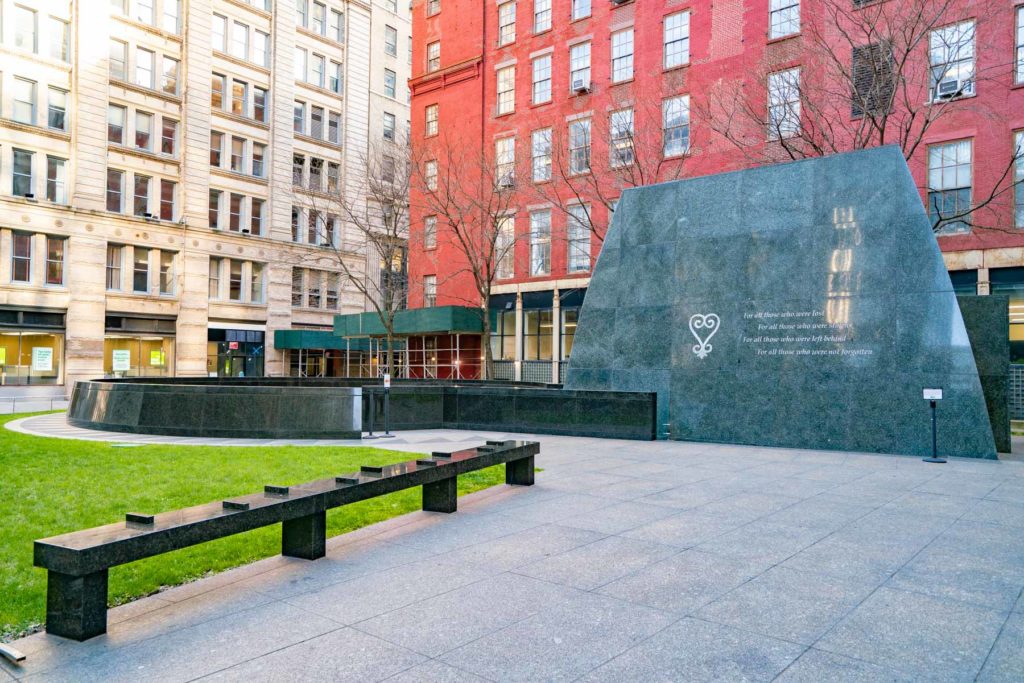
One of the most inspiring historic sites has quite a story to tell. At #8, it’s the African Burial Ground National Monument which is located in Lower Manhattan.
The site is a burial ground for enslaved Africans and free blacks who lived and died in New York City during the 17th and 18th centuries.
The site was first discovered in 1991 during the construction of a federal office building. Excavation revealed the remains of over 400 individuals, as well as evidence of a 17th-century African community in New York City.
This discovery was significant because it challenged the prevailing belief that there were no significant African settlements in colonial New York.
The remains were examined by archaeologists, anthropologists, and historians, who identified the individuals as mostly enslaved Africans and free blacks. The remains were determined to be between 300 and 400 years old, and were found to have been buried in accordance with African burial customs.
The discovery of the African Burial Ground sparked controversy and protest, as many activists and scholars demanded that the site be preserved and recognized as a historic monument. In response, the federal government halted construction of the office building and launched an extensive investigation into the site.
An Important Reminder Of The Contributions Of African Americans
The African Burial Ground National Monument also serves as an important reminder of the contributions and experiences of Africans and African Americans in early America, and the history of slavery in New York City. It is a place of reflection and learning that offers a deeper understanding of the past and its impact on the present.
The African Burial Ground National Monument is open to the public and admission is free. It is located in Lower Manhattan, and it’s a must-see for anyone interested in African American history, and the history of slavery in the United States.
And, while you’re immersing yourself in the history of this place, why not take a “deeper dive” with a walking tour of the African-American Freedom Trail.
RELATED: 10 BEST National Parks In New York City
African American Freedom Trail

This self-guided tour includes some places of major historical significance including:
- Fort Amsterdam-In 1625 enslaved Africans arrived in New Amsterdam. Among their first tasks was to build the first fort on Manhattan Island, known as Fort Amsterdam.
- Broadway-The city’s first municipal work force, African slaves cleared land and shoreline and widened Native American trails, including a wide road-later known as Broadway.
- Fraunces’ Tavern-A popular restaurant owned by Samuel Fraunces, a West Indian caterer of French and African origin. Site of General George Washington’s farewell address to his troops in 1783.
- Downing’s Oyster House-Popular restaurant in the early 1800s owned by black abolitionist Thomas Downing. Its cellar served as a stop on the Underground Railroad.
- The Wall-African slaves constructed a wall across Manhattan Island in 1653. Extending from the Hudson River to the East River, it is later known as Wall Street.
- Wall Street Slave Market-Established in 1711 at a pier at Wall Street and the East River, African men, women, and children were sold at the Wall Street Slave Market.
- 1712 Slave Revolt-A group of enslaved Africans ambushed whites on the outskirts of the city in 1712. Nineteen blacks were executed in response to the slave uprising.
- African Free School-Founded in 1787 in a single room for forty boys and girls.
- St. Peter’s Church-Destroyed by fire in 1835, the church was rebuilt chiefly from money given by Pierre Toussaint, a former slave and Haitian philanthropist.
Still More Sites To See On The African American Freedom Trail

10. The Dr. James McCune Smith House-A graduate of the African Free School, Dr. Smith established a medical practice and pharmacy here in 1837.
11. Pinkster Celebration-In the 17th century, the Afro-Dutch community celebrated an African ceremony called Pinkster at this site. The annual celebration coincided with the Christian observance of Pentecost.
12. 1741 Executions-A rumor of a slave uprising in New York City led to the trial and convictions of thirty-five defendants. All were executed, either by hanging or burning, including’ thirty-one black men, two white men, and two white women.
13. Road to Harlem-In 1658, African workers built the road to Harlem (later known as the Boston Post Road).
14. 1863 Draft Riots-During four days of citywide violence in July 1863, the homes of African Americans and abolitionists were firebombed. Estimates range from 100 to more than 1,000 people killed, including two men, Abraham Franklin and Jeremiah Robinson, on Roosevelt Street.
15. Land of the Blacks-From 1643 to 1712, more than thirty farms owned by free blacks spanned the frontier north of the African Burial Ground to 34th Street.
16. Frederick Douglass-The Hudson River pier where Frederick Washington Bailey, a runaway slave from Maryland, came ashore in 1838. Aided by the Underground Railroad, Bailey achieved freedom and renamed himself Frederick Douglass.
17. Abyssinian Baptist Church-Founded in 1808 by black members of the First Baptist Church.
18. Mother A.M.E. Zion Church-The first African-American church in New York City, founded in 1796.
19. Freedom’s Journal
20. Ruggles’ Boarding House-Rooming house for blacks owned by black abolitionist David Ruggles, and an 22. Underground Railroad station that assisted hundreds of fugitives, including Frederick Douglass. (Source: NPS)
7. General Grant National Memorial
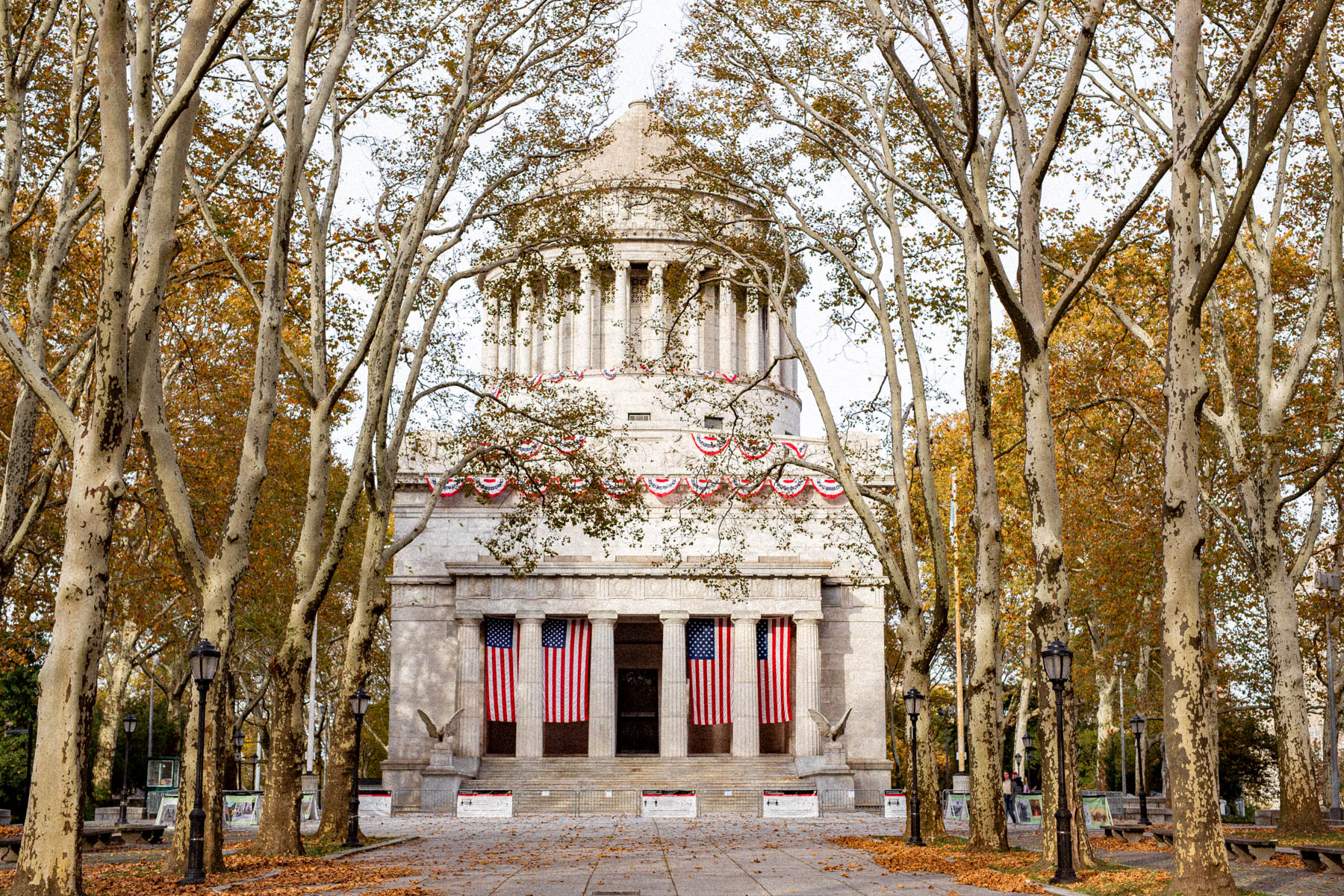
We’re moving on to another amazing historical site and you don’t have to leave New York City to see it. At #7 on our list of the Best Historic Sites In New York is the General Grant Memorial.
Washington was the first victorious general to ascend to the White House. He would be followed by others among them Ulysses S. Grant. Grant (1822-1885) commanded the victorious Union army during the American Civil War (1861-1865) and served as the 18th U.S. president from 1869 to 1877.
The final resting place of Ulysses S. Grant is just one of the things to see at the General Grant National Memorial. It’s the largest mausoleum in North America.
At the memorial, you can see a 20-minute film about Grant’s life and achievements titled “A Legacy of Freedom.” There’s also a permanent exhibit gallery addressing some of the major events in Ulysses S. Grant’s life as well as a bookstore/giftshop. There you can find some fascinating historical works as well as other Grant memorabilia.
If you want to learn the story of the man who served as the Lieutenant General of the Armies (a rank previously held only by George Washington) and who was considered by many to be the most important general in our nation’s history after George Washington.
Take A Deeper Dive
If you’re interested in taking a deeper dive into the story of this incredible individual you cannot do better than his personal memoirs–The Complete Personal Memoirs of Ulysses S. Grant.
Of course, if you’re looking for a more objective assessment that I would recommend either Grant by Ron Chernow or Grant by Jean Edward Smith. I’ve read both and both are excellent.
6. Sagamore Hill National Historic Site

We have left New York City again to travel to Sagamore Hill. At #6 on our list is Sagamore Hill National Historic Site – home of the nation’s 26th President of the United States, Theodore Roosevelt.
The property was purchased by Theodore Roosevelt’s father, Theodore Roosevelt Sr., in 1880, and the house was built between 1884 and 1885.
The house was designed by the New York City-based architectural firm Lamb & Rich in the Queen Anne style, and it features a large porch, a tower, and numerous dormers. The house was named “Sagamore Hill” after the Algonquin word for “chief.”
After Theodore Roosevelt’s father died in 1878, he inherited the property and began using it as a summer retreat. He expanded the house and added several outbuildings, including a barn, a chicken coop, and a blacksmith shop. He also created extensive gardens and a working farm on the property.
A Summer White House
During his presidency, Roosevelt used Sagamore Hill as his “Summer White House,” hosting numerous political and social events at the estate. He entertained many notable guests and conducted much of his presidential business from Sagamore Hill.

After Roosevelt’s death in 1919, the estate passed to his widow, Edith Roosevelt. She continued to use the property as a summer residence until her death in 1948. In 1950, the property was donated to the American people and became a national historic site.
Today, Sagamore Hill National Historic Site is open to the public and offers tours of the house, gardens, and outbuildings. The site also hosts special events and educational programs, and includes a museum and visitor center.
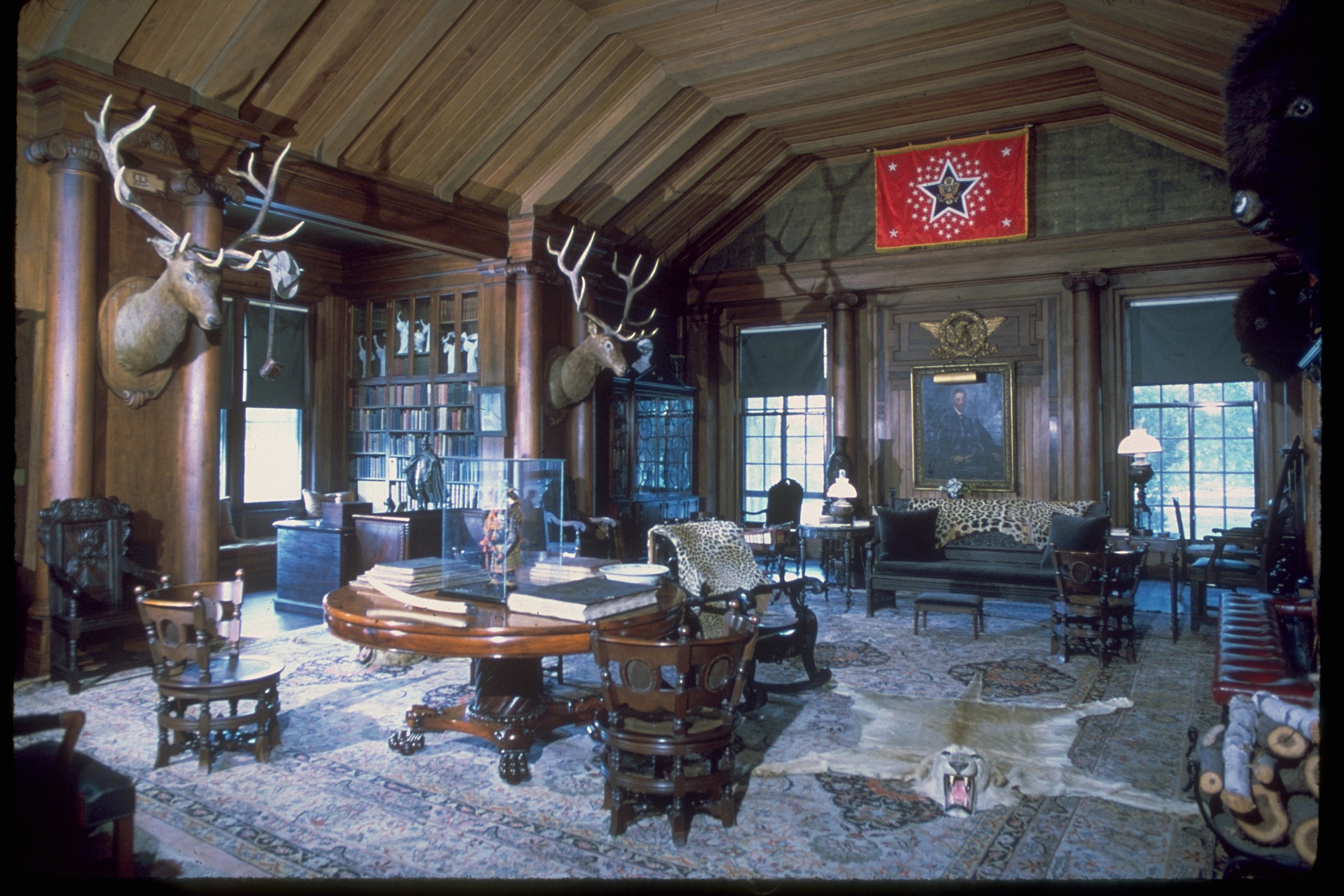
The Top 5 Historical Sites In New York
5. Ellis Island
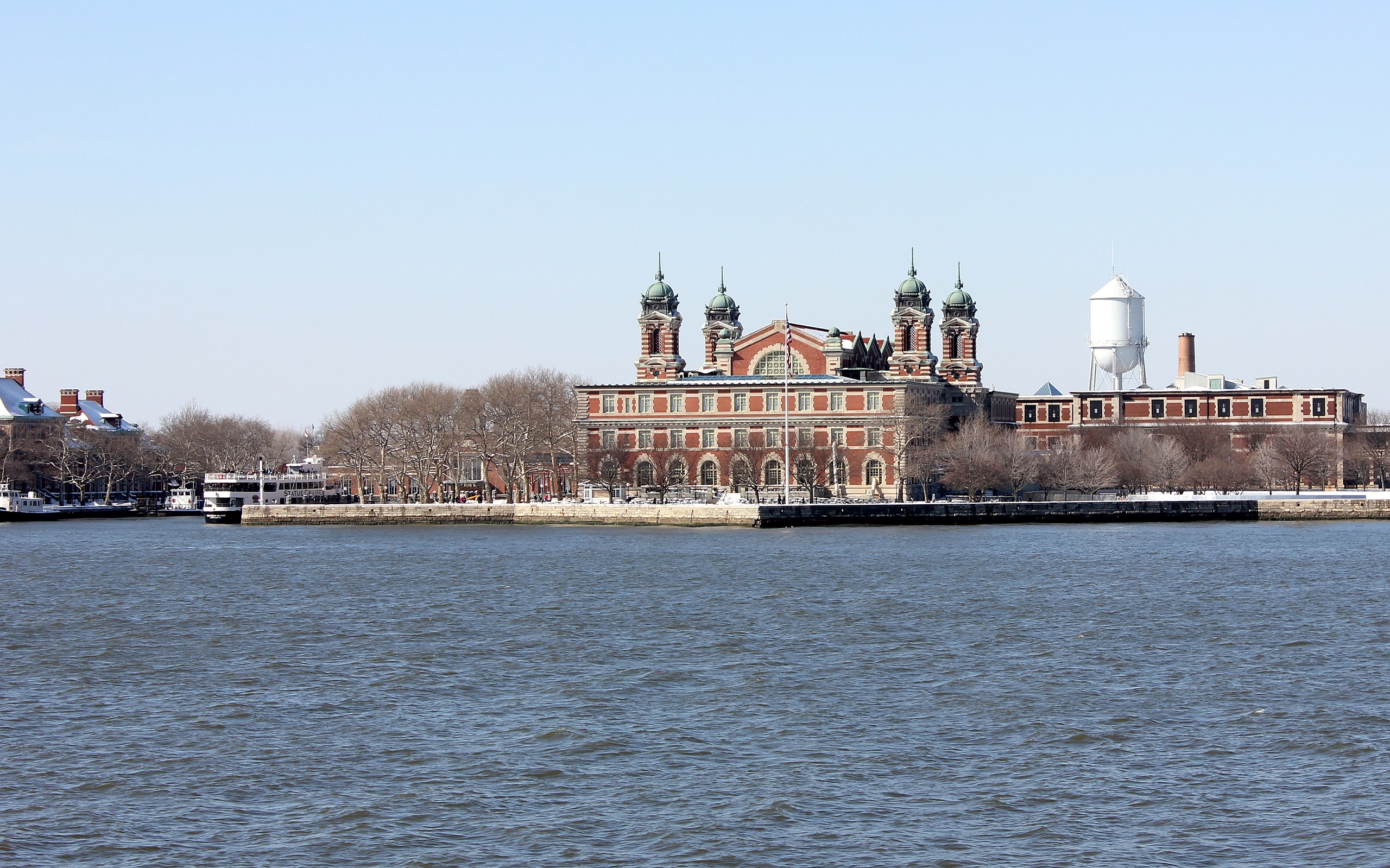
We’re on to the Top 5 Historic Sites In New York. And we’re back in New York City. At # 5 is one of the most iconic places in American history – Ellis Island.
Ellis Island that served as the primary immigration processing center in the United States from 1892 to 1954. It is estimated that more than 12 million immigrants passed through Ellis Island during this time.
The history of Ellis Island dates back to the mid-19th century when the federal government purchased the island from New York State to use as a military fortification. In 1890, the federal government decided to convert the island into an immigration processing center to manage the large influx of immigrants coming to the United States from Europe.
Ellis Island opened its doors on January 1, 1892, and the first immigrant to be processed was Annie Moore, a 15-year-old girl from Ireland. Over the next six decades, Ellis Island would become the busiest immigration processing center in the United States, with thousands of immigrants passing through its doors each day.
It Was A Gateway To A Better Life
Immigrants arriving at Ellis Island were subjected to a rigorous screening process to ensure they were healthy and not likely to become a burden on society. They underwent medical exams and had to answer a series of questions to determine their eligibility to enter the country. Those who failed the screening process were sent back to their home country.
Ellis Island played an important role in shaping the cultural and social fabric of the United States. It was a symbol of hope and opportunity for millions of immigrants seeking a better life in America.
The island also served as a gateway for immigrants to assimilate into American society, and many of the traditions and customs of different ethnic groups can be traced back to their arrival at Ellis Island.
Today, Ellis Island is a National Park and is home to the Ellis Island National Museum of Immigration, which tells the story of the immigrants who passed through its doors and their contributions to American society. It is an important historical landmark and a symbol of the American dream.
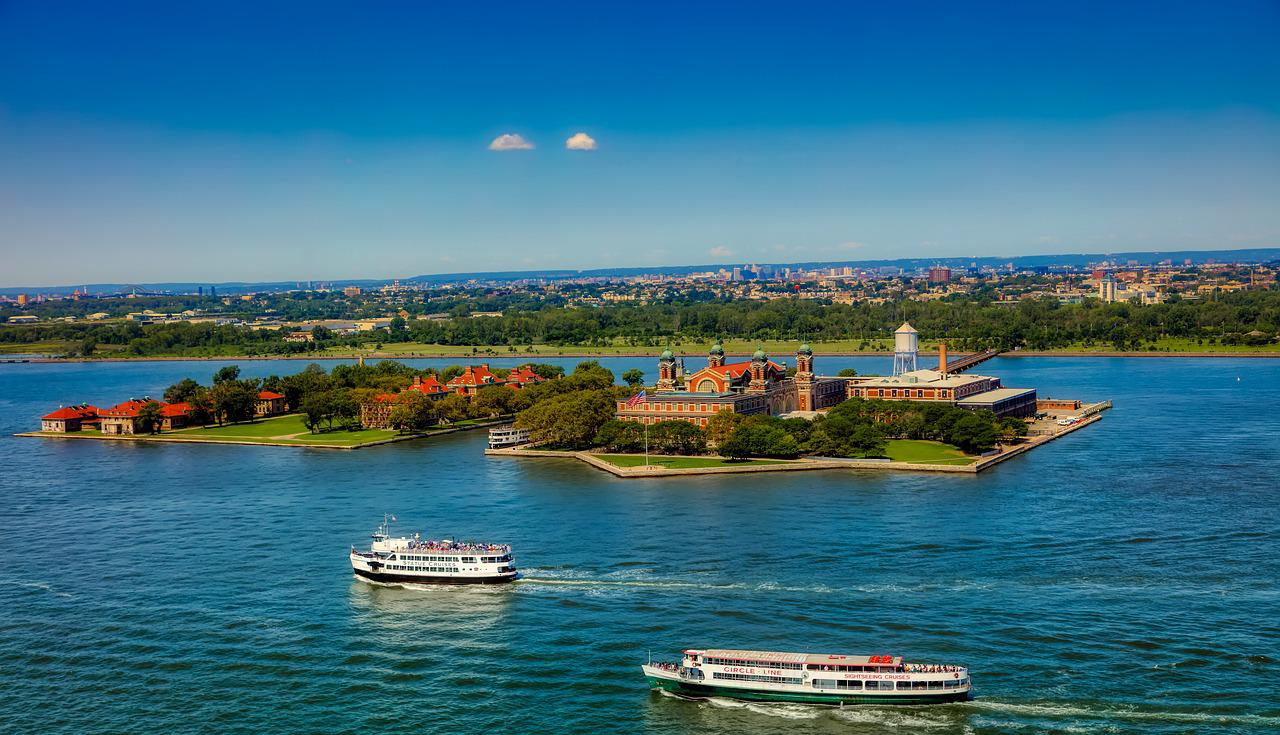
RELATED: 40 EPIC National Parks In Washington D.C.
4. Home Of Franklin D. Roosevelt National Historic Site
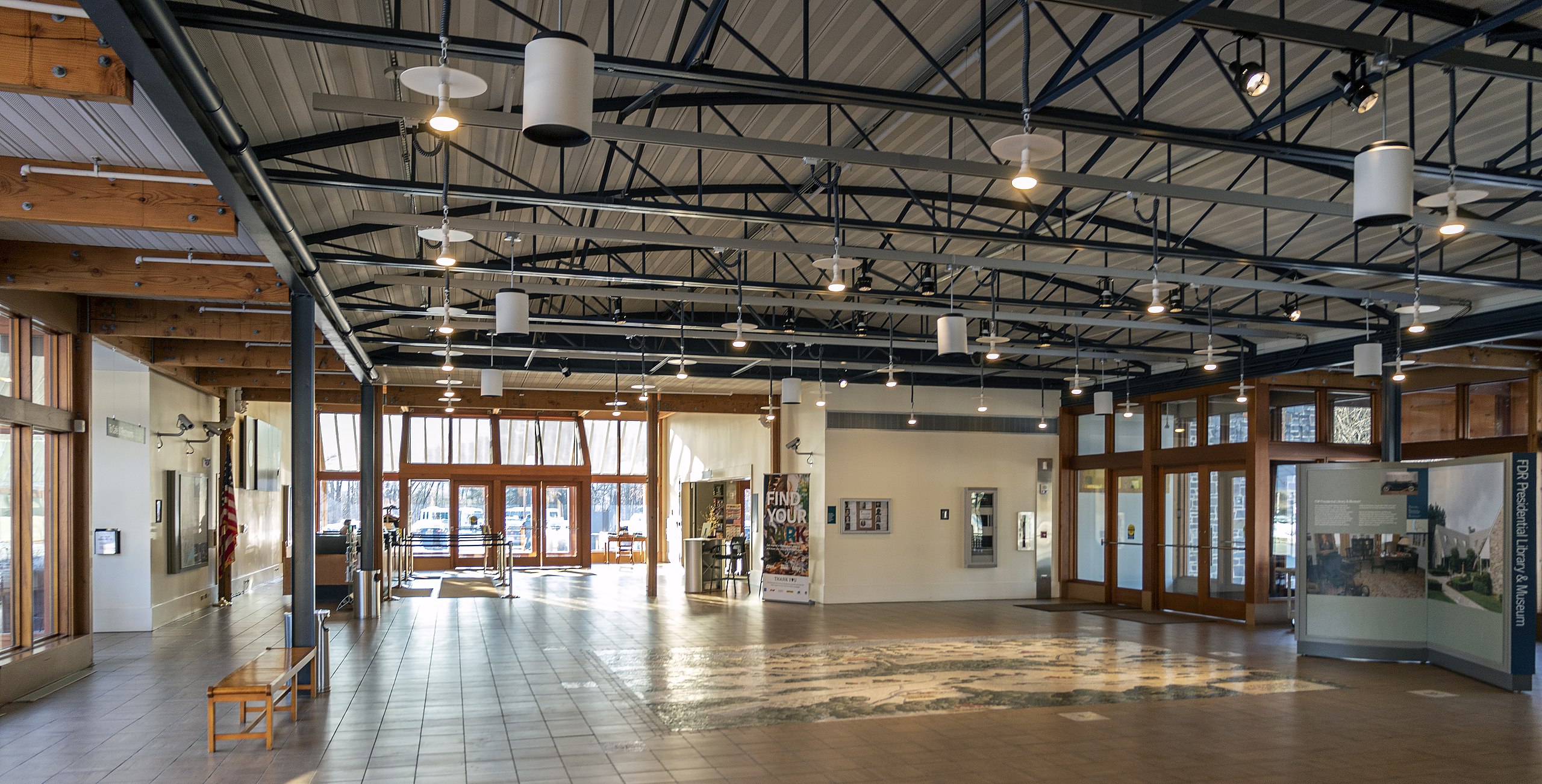
We’re on to the “Final Four” on our list of the Best Historic Sites In New York. At #4, we celebrate another of America’s greatest presidents who also happens to be named Roosevelt. It’s the Home Of Franklin D. Roosevelt National Historic Site
The site is dedicated to the life and legacy of Franklin D. Roosevelt, the 32nd President of the United States. It includes the Springwood Estate, which was the birthplace, lifelong home, and final resting place of Franklin D. Roosevelt.
The history of the Home of Franklin D. Roosevelt National Historic Site dates back to the late 18th century when the original portion of the Springwood Estate was built. The property was purchased by James Roosevelt, Franklin’s father, in 1867, and it was expanded and renovated over the years to become a grand estate.
Franklin D. Roosevelt was born at Springwood in 1882 and spent much of his childhood there. He later inherited the estate and made significant changes to the property, including adding a library, a swimming pool, and a rose garden.
The Estate Played A Role In The Career Of Franklin Roosevelt
The estate played an important role in Franklin D. Roosevelt’s political career, serving as a meeting place for political leaders and as the location where he delivered some of his most famous speeches, including his “Day of Infamy” speech following the attack on Pearl Harbor.
After his death in 1945, the estate was bequeathed to the American people and became a National Historic Site in 1949. Today, visitors to the site can take guided tours of the estate and learn about the life and legacy of Franklin D. Roosevelt.
The site includes the house and grounds, as well as the Presidential Library and Museum, which contains exhibits and artifacts related to Roosevelt’s presidency and the history of the United States during the 1930s and 1940s.
The site also includes a presidential library, which houses the papers and artifacts of Franklin D. Roosevelt, and a visitors center, which provides information about the history of the site and the Roosevelt family.
Visitors can also take guided tours of the main house and the outbuildings, as well as hiking trails through the surrounding woods and gardens.
The Home of Franklin D. Roosevelt National Historic Site is open to the public and admission is free.

RELATED: 15 Must-See Historic Sites In Georgia
3. Times Square
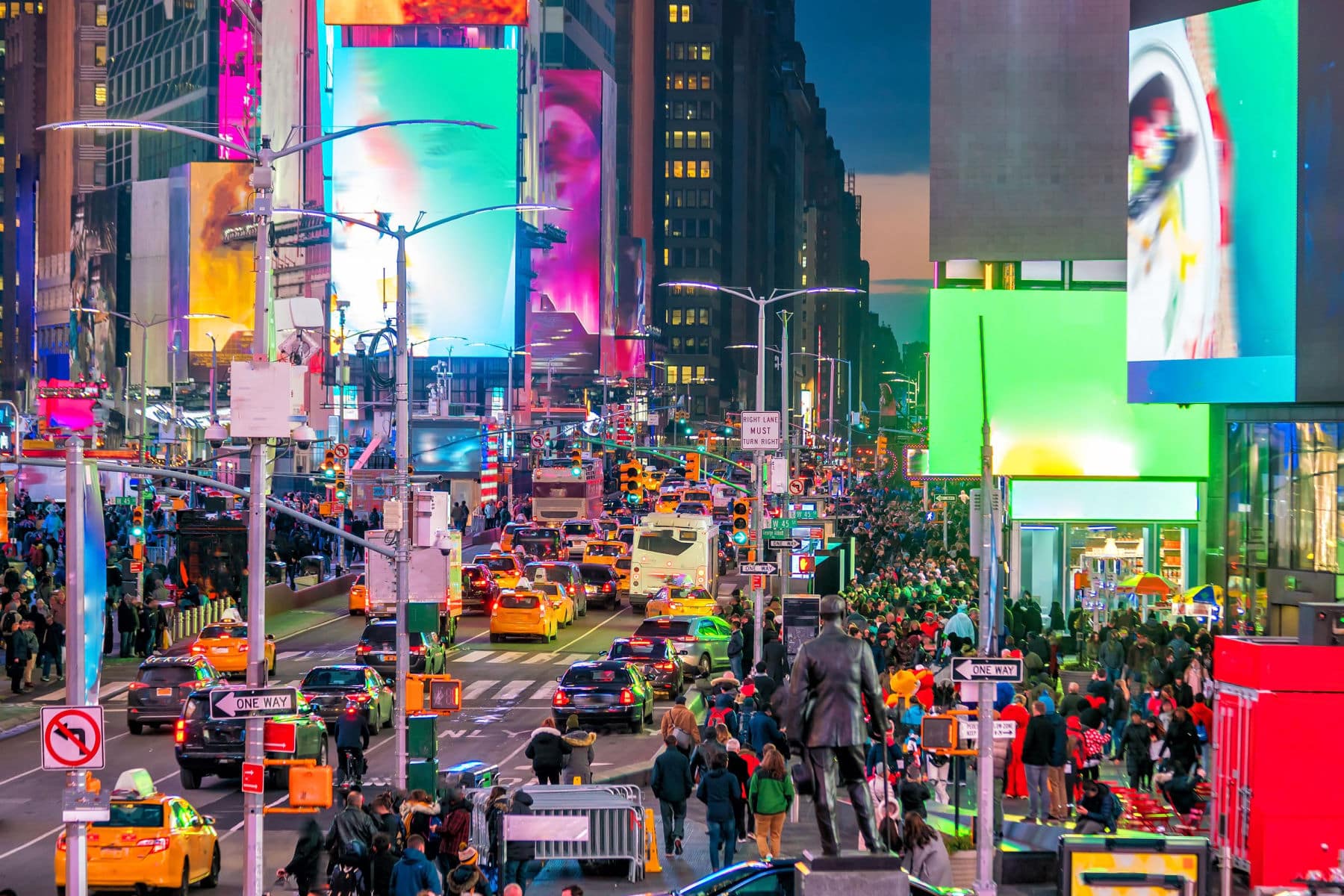
We’re on to the final three historic sites and at #3 we have a place which is one of the most recognizable in the world. It’s Times Square located in New York City.
Times Square is a major commercial intersection and tourist destination in New York City, known for its bright lights, billboards, and bustling atmosphere.
It is located in Midtown Manhattan, at the intersection of Broadway and Seventh Avenue, and is often referred to as “The Crossroads of the World” or “The Center of the Universe.”
The History Of Times Square
In the late 1800s, the area was a bustling commercial district filled with theaters, hotels, and shops. It was also a transportation hub, with several horse-drawn carriage lines converging in the area. In 1904, the New York Times moved its headquarters to a new building in the area, and the square was renamed Times Square in its honor.
During the early 20th century, Times Square became the center of the city’s entertainment industry. Many of the city’s largest and most famous theaters were located in the area, including the Palace Theatre, the New Amsterdam Theatre, and the Winter Garden Theatre. The area also became known for its nightlife, with numerous bars, clubs, and restaurants opening up to cater to the crowds.
In the 1920s and 1930s, Times Square became a symbol of the city’s prosperity and glamour. The square was filled with bright lights, large billboards, and neon signs advertising everything from Broadway shows to cigarettes. The area was also home to several large department stores, including Macy’s and Saks Fifth Avenue.
However, by the 1960s and 1970s, Times Square had fallen into decline. The area became known for crime, prostitution, and drug use, and many of the theaters and businesses closed down. In the 1980s, the city government began a campaign to revitalize the area, and many of the old buildings were renovated and turned into commercial and entertainment venues.
Today, Times Square is once again a thriving commercial and entertainment center, with numerous theaters, restaurants, and shops attracting millions of visitors each year. The square is also known for its famous New Year’s Eve celebration, where a large crystal ball is dropped from a building in the square to mark the beginning of the new year.
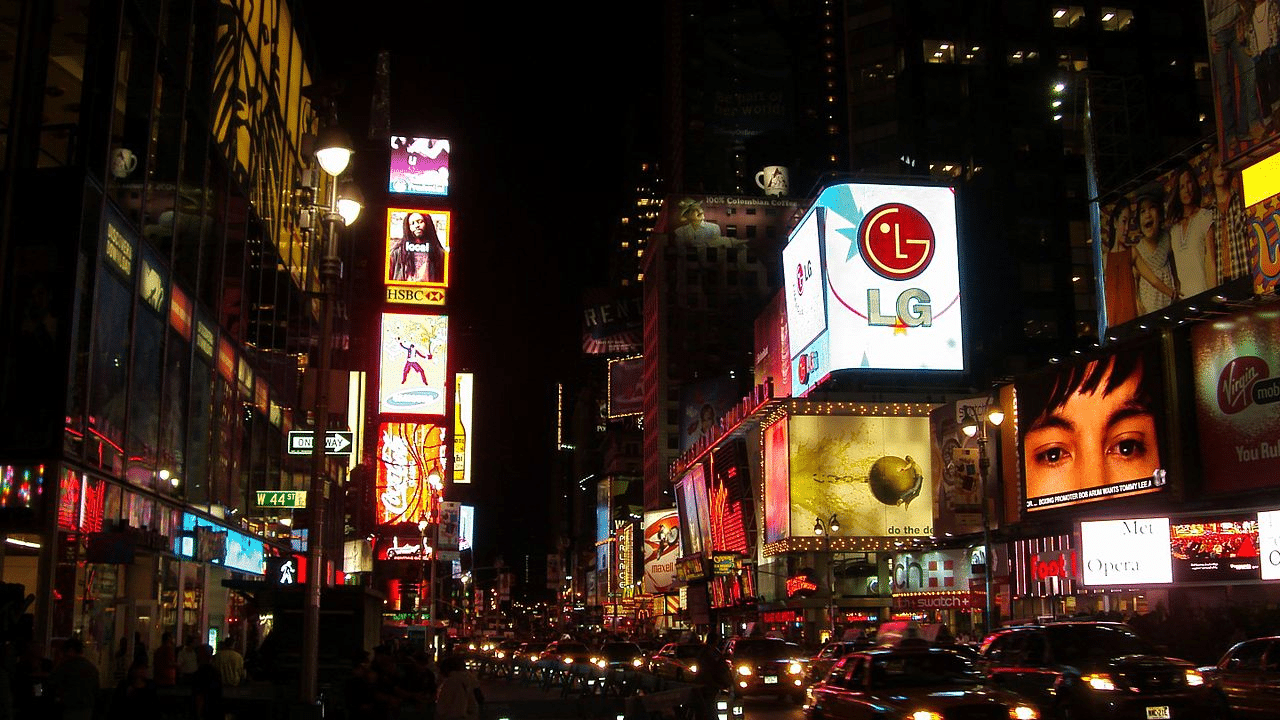
2. 911 Memorial
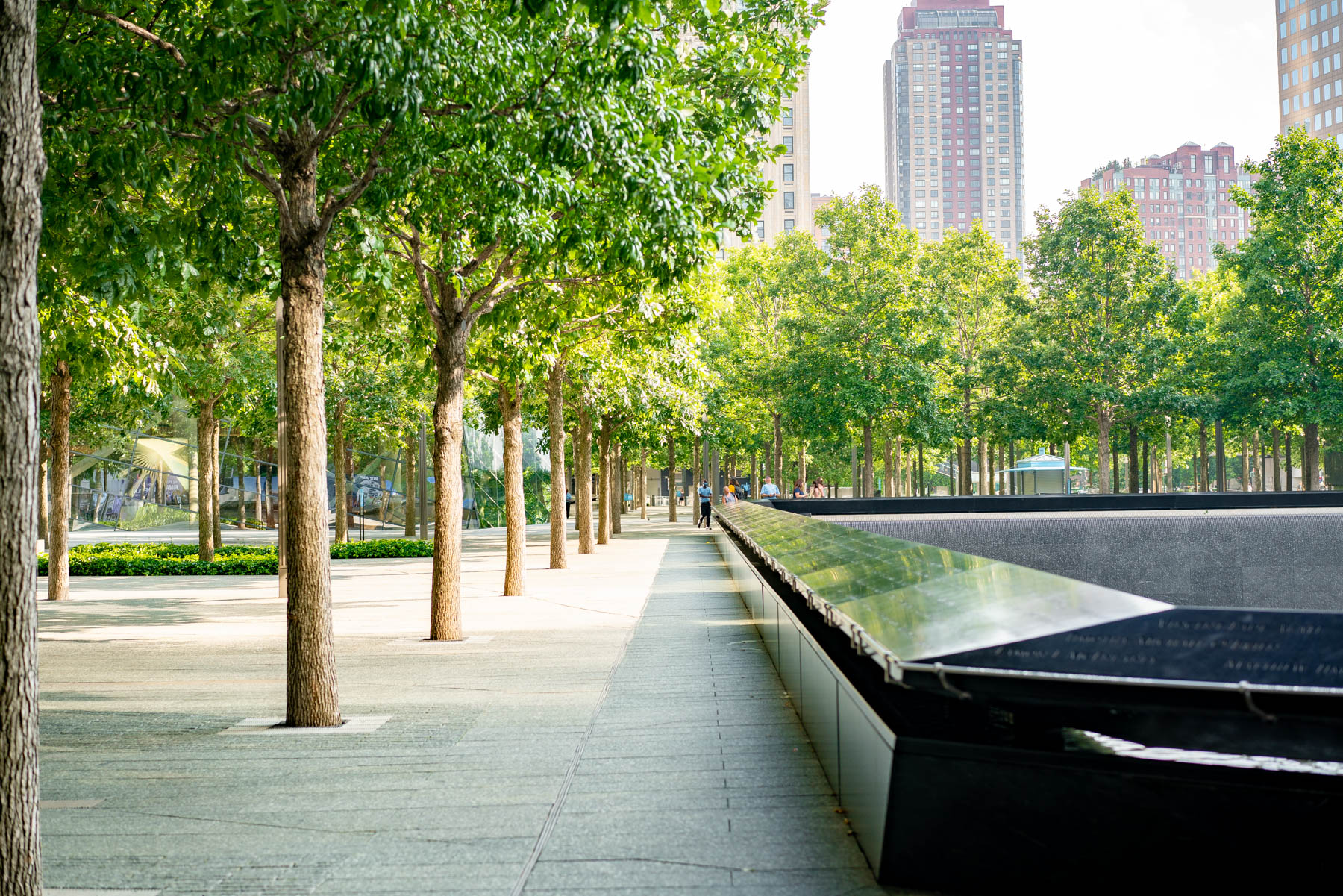
We’re saving the best for last as we move on to our final two historic sites. Both of these sites are located in New York City. In the runner-up position at #2 is the 9/11 Memorial.
This memorial is a tribute to the victims of the terrorist attacks of September 11, 2001, and it’s located at the World Trade Center site in Lower Manhattan, New York City.
The memorial includes two large pools, each located in the footprint of the Twin Towers, which were destroyed in the attacks. The pools are surrounded by a plaza that is inscribed with the names of the victims of the attacks.
The memorial also includes a museum, located within the footprint of the original towers, that tells the story of 9/11 and its aftermath through a variety of exhibits, including artifacts, photographs, and oral histories. The museum also includes a section dedicated to the victims, which includes personal items and photographs.
It’s A Place Of Remembrance & Reflection
The memorial is open to the public and is free to visit. It is a place of remembrance and reflection, and it serves as a powerful reminder of the tragic events of September 11, 2001, and the impact they had on the city and the world. The memorial is often busy, so it is recommended to book a reservation in advance.
The 9/11 Memorial is a sacred and emotional place, representing an important part of the history of New York City and America, and it’s a must-see for anyone visiting the city who wants to honor the memory of the victims and pay their respects to the families and friends of those who lost their lives.
Do You Remember Where You Were On That Historic Day?
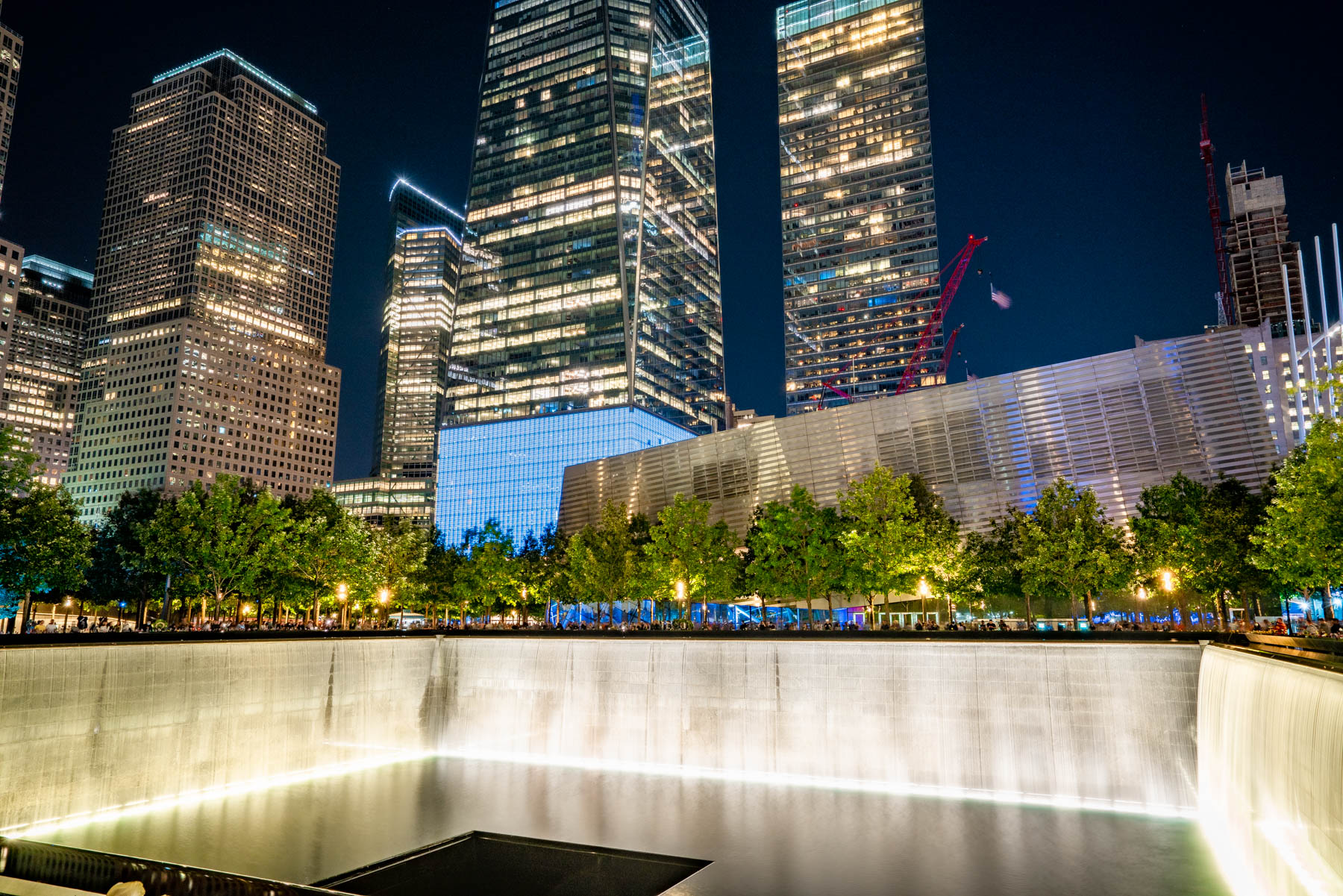
An overwhelming share of Americans who are old enough to recall the day remember where they were and what they were doing when they heard the news.
I’ve been there and I believe that every American needs to make this pilgrimage to truly appreciate and understand this memorial.
Not only the evil deeds which were committed on this day, but also the incredible acts of heroism performed by first responders as well as ordinary Americans who found themselves confronting the most dastardly attack on America since Pearl Harbor.
1. Statue Of Liberty National Monument
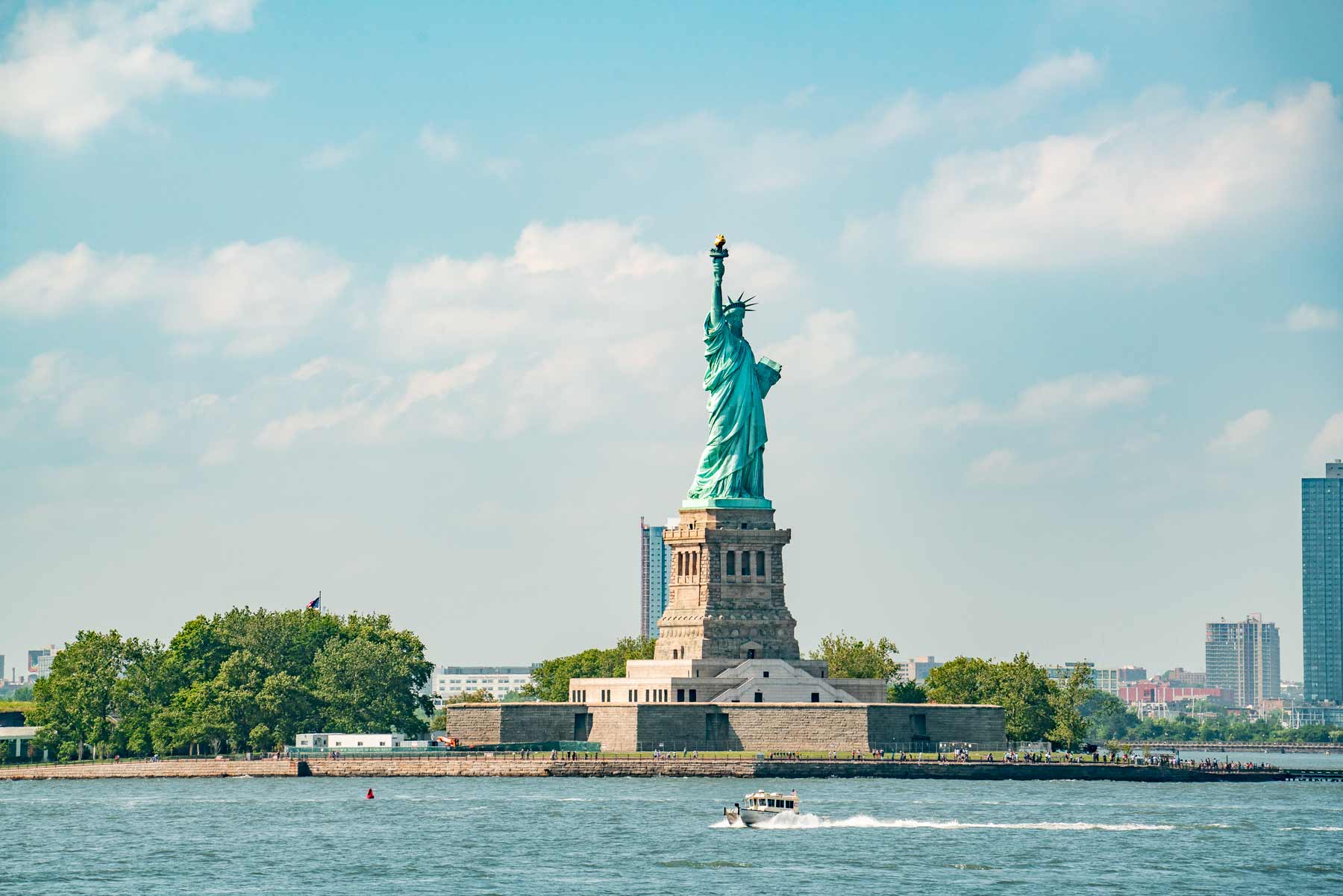
We’ve saved the best for last! As the #1 Historic Site In New York, More Than Just Parks has selected what we believe is the most iconic landmark, not only in New York, but in America. It’s the symbol of what the United States stands for. At #1 we have the Statue of Liberty.
The Statue of Liberty is one of the most iconic symbols of the United States and stands as a symbol of freedom and democracy around the world. The statue is located on Liberty Island in New York Harbor and was a gift from the people of France to the people of the United States.
The idea for the statue was first proposed by a French politician and abolitionist named Édouard René de Laboulaye in 1865. He suggested that France should give a gift to the United States to commemorate the friendship between the two nations and to celebrate the abolition of slavery in the United States.
The French government agreed to the idea, and the famous sculptor Frédéric-Auguste Bartholdi was chosen to design the statue. Bartholdi modeled the statue after the Roman goddess Libertas, who was the goddess of freedom and was often depicted wearing a crown and holding a torch.
A Symbol Of Hope & Freedom
Construction on the statue began in France in 1875, and it was completed in 1884. It was then disassembled and shipped to the United States, where it was reassembled on a pedestal on Liberty Island in New York Harbor.
The statue was officially unveiled on October 28, 1886, in a ceremony attended by numerous dignitaries, including President Grover Cleveland. The statue quickly became a symbol of hope and freedom for immigrants who came to the United States seeking a better life.
Over the years, the statue has undergone several renovations and restorations to preserve its beauty and ensure that it remains a symbol of freedom and democracy for future generations. Today, the Statue of Liberty is a popular tourist attraction, with millions of visitors from around the world coming to see this iconic symbol of the United States.
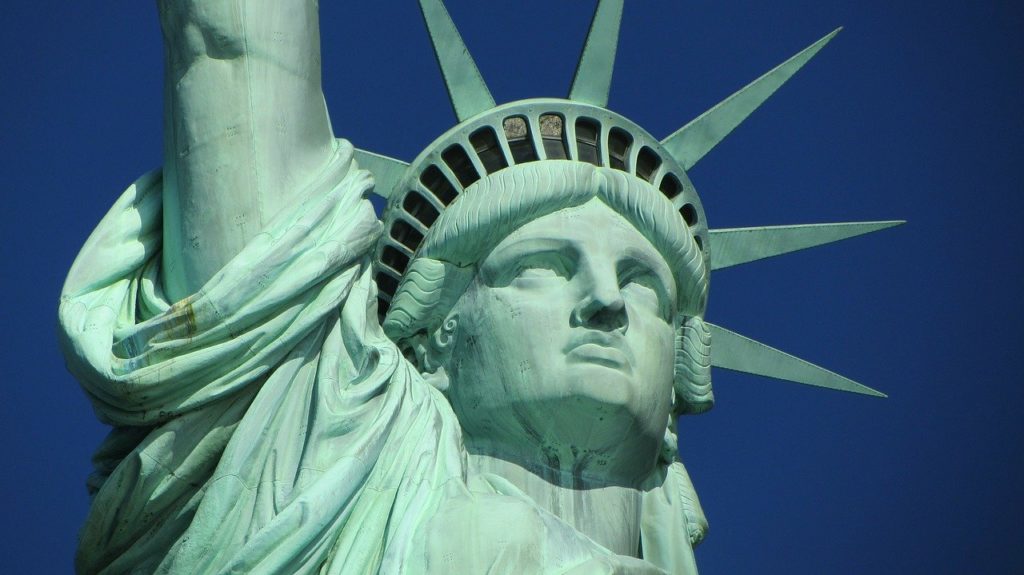
See Lady Liberty Up Close & Personal
The statue was closed for renovation from 1984 to 1986 and again in 2019-2021 and is now open to the public. Visitors can take a ferry to Liberty Island to see the statue up close, and also to Ellis Island, which is where millions of immigrants passed through on their way to the United States during the late 19th and early 20th centuries.
Visitors can also take an elevator to the crown of the statue for a panoramic view of the harbor.
The Statue of Liberty is an iconic symbol of freedom and democracy and is one of the most famous landmarks in the United States. It’s a must-see for anyone visiting New York City and is a powerful reminder of the ideals of freedom and opportunity that have defined the United States since its founding.
Emma Lazarus – The New Colossus
You may remember learning that wonderful Emma Lazarus poem titled, “The New Colossus.” Who could forget those stirring lines which go as follows:
“Give me your tired, your poor,
Your huddled masses yearning to breathe free,
The wretched refuse of your teeming shore.
Send these, the homeless, tempest-tost to me,
I lift my lamp beside the golden door!”
Sitting in the heart of New York Harbor lies what is arguably the most recognizable symbol in America – The Statue of Liberty.
List Of Historic Sites In New York
- Statue Of Liberty National Monument
- 911 Memorial
- Times Square
- Home Of Franklin D. Roosevelt National Historic Site
- Ellis Island
- Sagamore Hill National Historic Site
- General Grant National Memorial
- African Burial Ground National Monument
- Federal Hall National Memorial
- Women’s Rights National Historic Park
- Grand Central Station
- The Metropolitan Museum of Art
- Empire State Building
- The American Museum Of Natural History
- Brooklyn Bridge
- Fraunces Tavern
- Trinity Church
- Rose Center For Earth & Space
- Tenement Museum
- Central Park
Why Trust Us About Historic Sites In New York?
We’re Jim Pattiz and Will Pattiz, collectively known as the Pattiz Brothers and we absolutely LOVE the national parks.
You should probably know that we don’t just make this stuff up out of thin air. We’ve spent our entire adult lives exploring and filming America’s national parks and public lands.
We’ve worked with the National Park Service, the Department of Interior, USDA, U.S. Forest Service, and more for years creating films on important places and issues. Our work has been featured in leading publications all over the world and even some people outside of our immediate family call us experts on the national parks.
And, in 2018, our father – having spent a lifetime teaching history – joined us so that he could help us to tell the stories behind these amazing places.
Meet The Parks Brothers
We Hope You’ll Follow Our Journey

Our goal here at More Than Just Parks is to share the beauty of America’s national parks and public lands through stunning short films in an effort to get Americans and the world to see the true value in land conservation.
We hope you’ll follow our journey through the parks and help us to keep them the incredible places that they are. If you’re interested in joining the adventure then sign up below!
Related Links
What Is A National Park? To learn more about the difference between the various National Park Service designations check out our article that explains everything!
National Parks In New York City: 10 Best National Parks In New York City
National Parks In New York: 25 EPIC New York National Parks
Historic Landmarks In America: 25 Bucket List Famous Landmarks In America





Leave a Reply